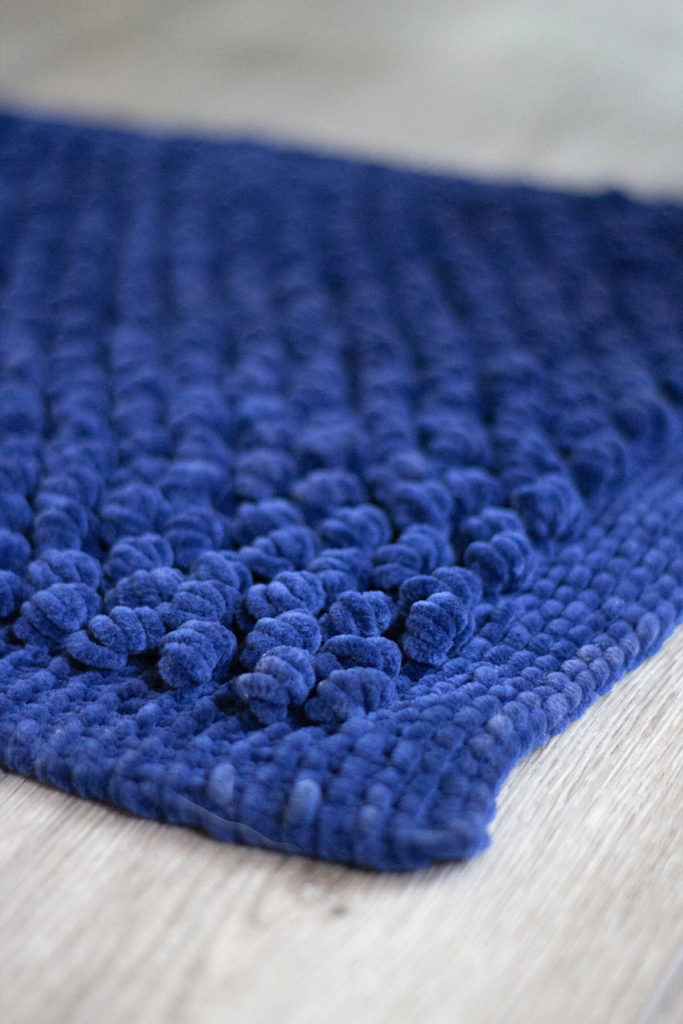
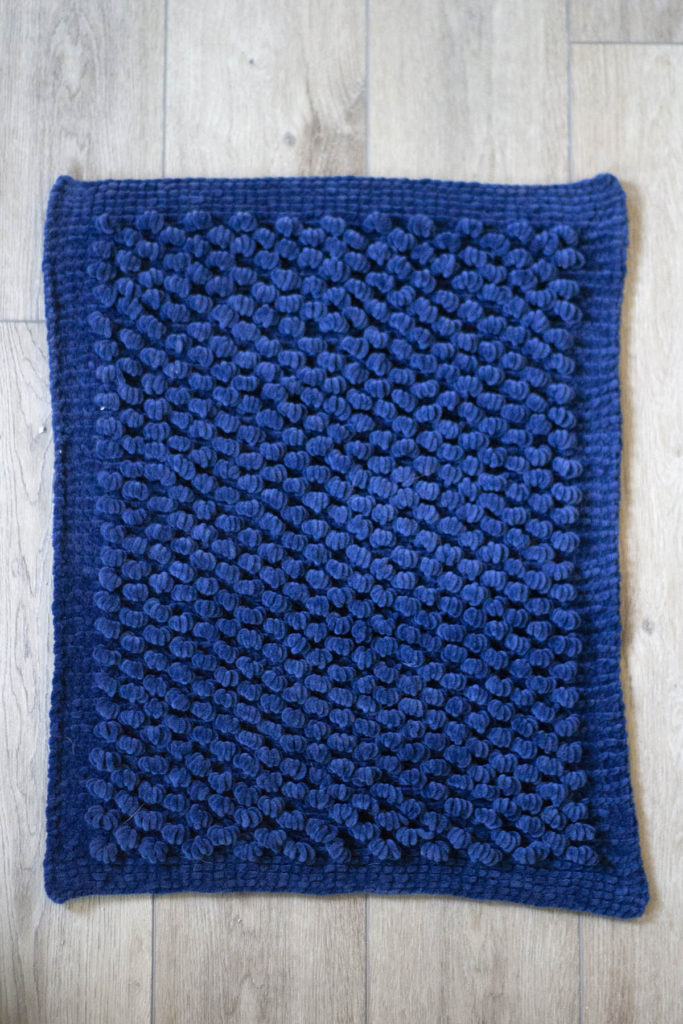
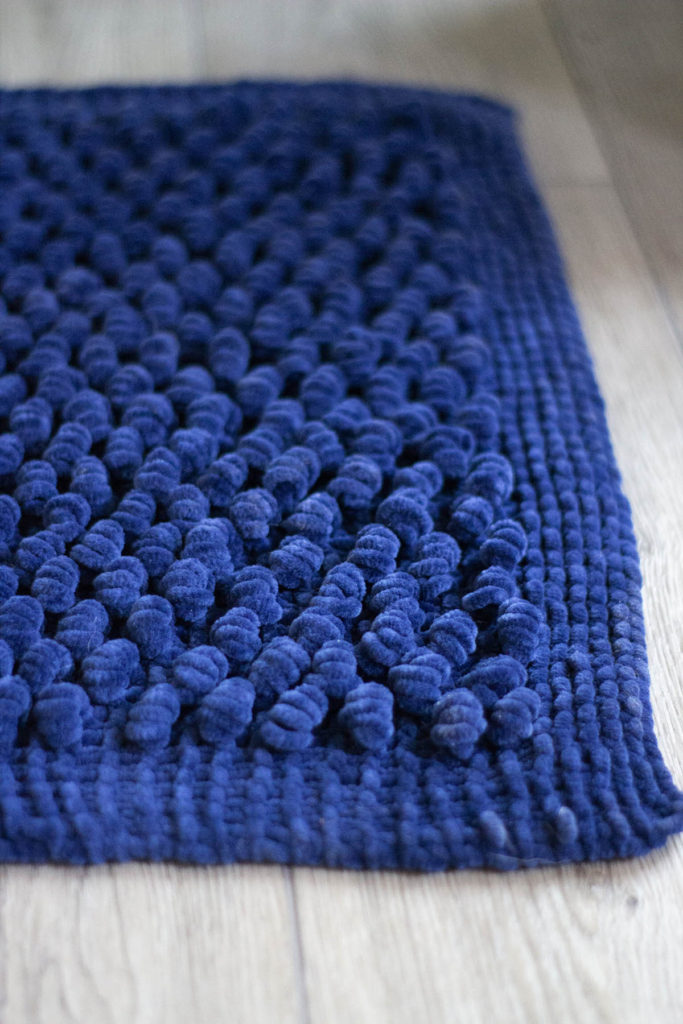
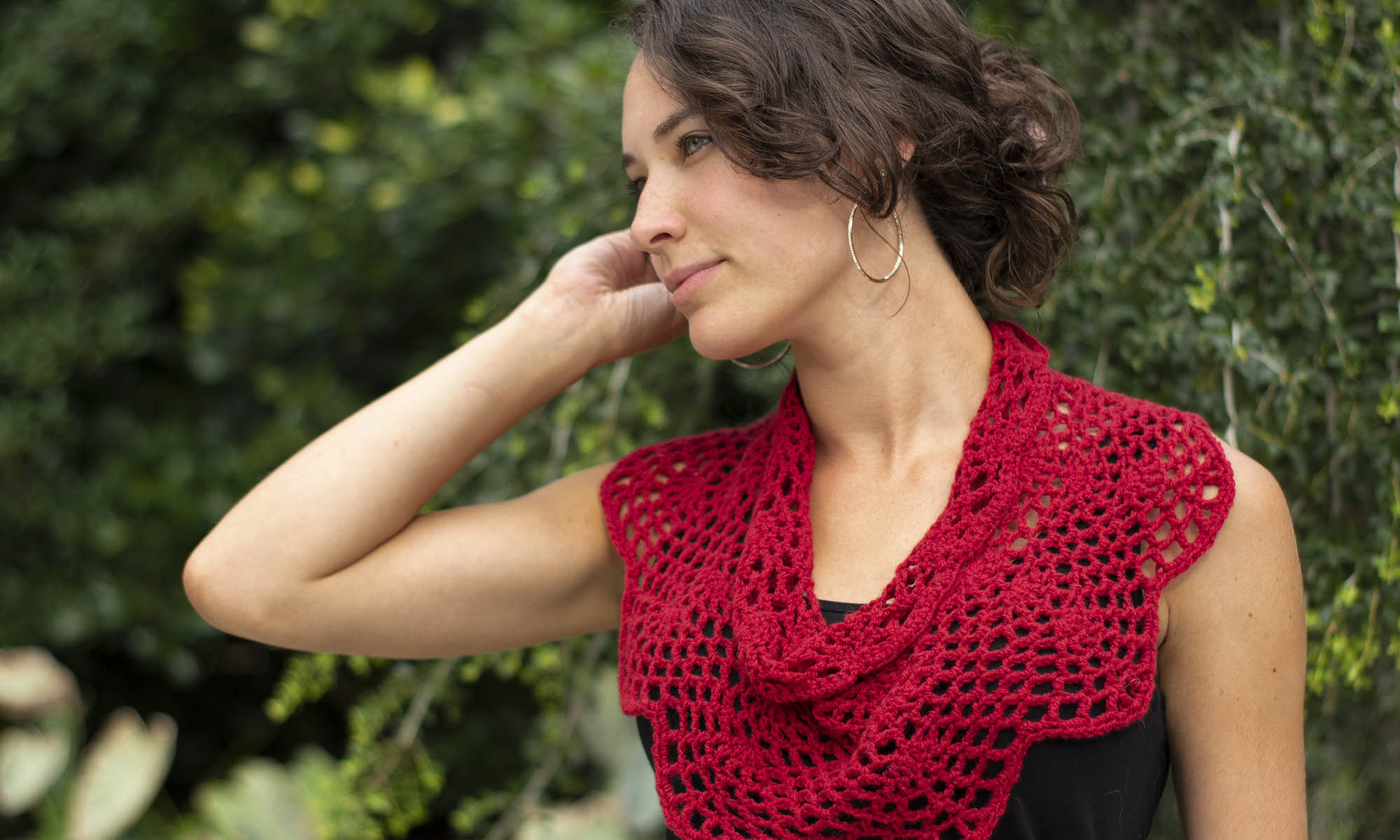

Universal Yarn Creative Network
Inspiration By Design



Seasons Greetings from the Universal Yarn Team! Today, we’re pleased to share a special free pattern with you for the Christmas season: the Carolina Holly hat (pattern link)! Holly – like poinsettias, mistletoe, and ivy – conjures images of the holidays. The spiky plant is evergreen and beautiful, and it was the inspiration for the Carolina Holly hat.
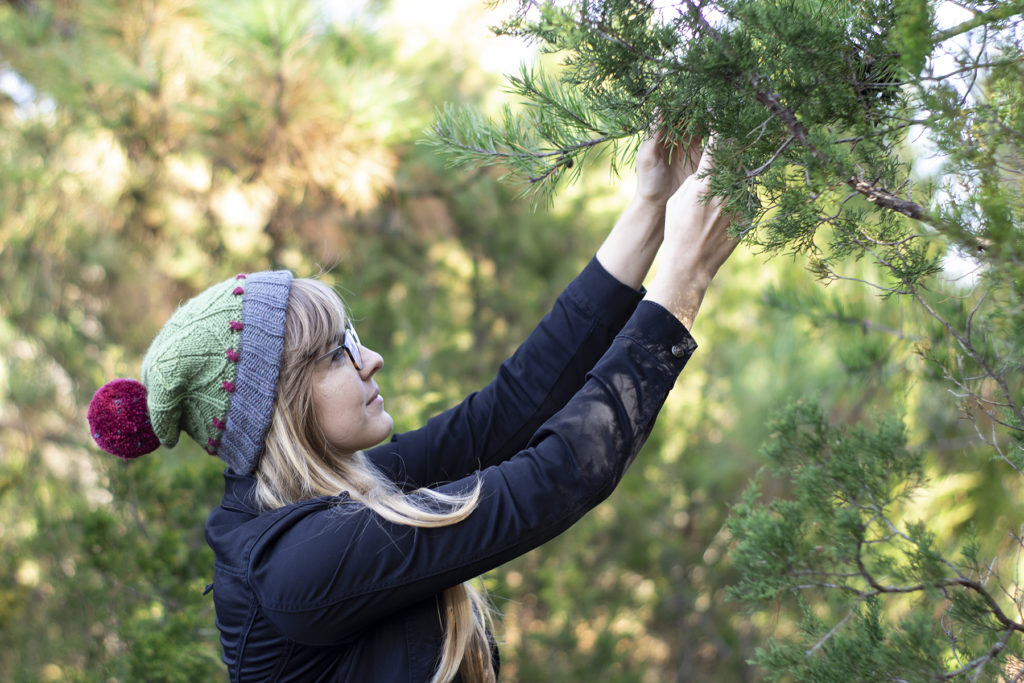
This free pattern is a load of fun to knit. It takes three skeins of Deluxe Worsted – and that’s enough to make two hats. Of our line of yarns, Deluxe Worsted might just be my favorite. It’s excellent for every type of project, creates long-wearing fabric, and perfectly balances softness with the crunch of pure wool that I love. Plus, there are so many colors to choose from. For this hat I chose Sangria, City Turf, and Slate, but there are so many shades of red, green, and grey in the palette. I encourage you to find the combination that leaves you feeling inspired! Prefer superwash wool? You’re in luck – our machine-washable Deluxe Worsted Superwash would work perfectly as a substitute.
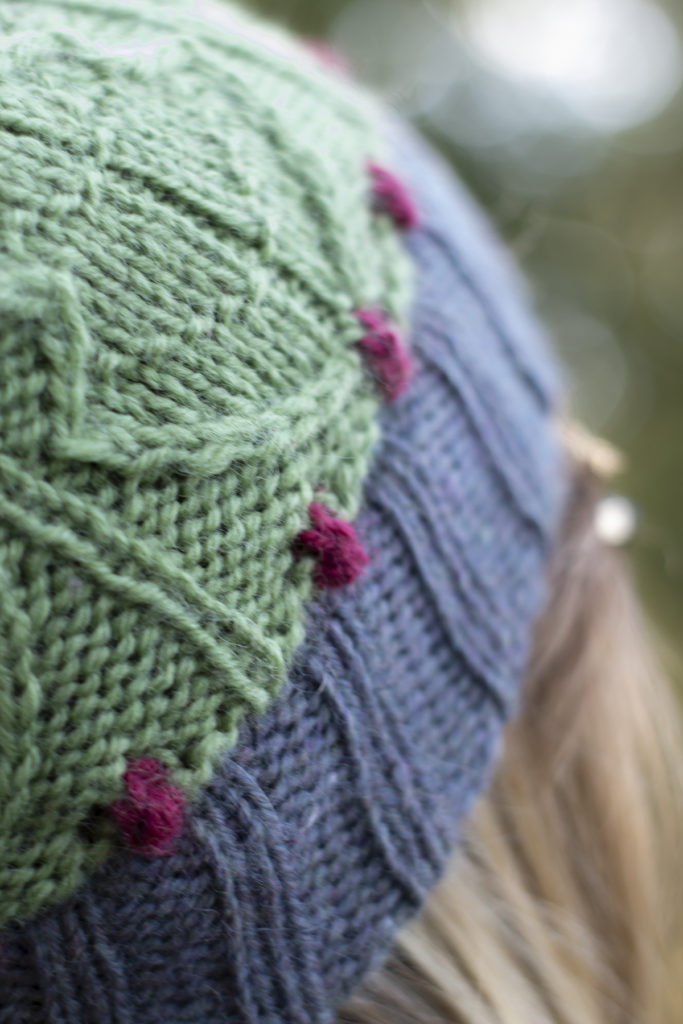
I wanted to give this hat some special touches. A double-thick brim ensures a warm and comfortable fit. A row of mini-bobbles knit in a rich red create little holly berries, and a large red pom-pom balances out the pop of red. Finally, to incorporate the grey used in the brim, the same color is used to add speckles to the pom-pom. The speckled pom-pom idea was not my own. I was inspired by designer Kiyomi Burgin, who has used this technique in her own work. You can find her post on speckled pom-poms here (link).
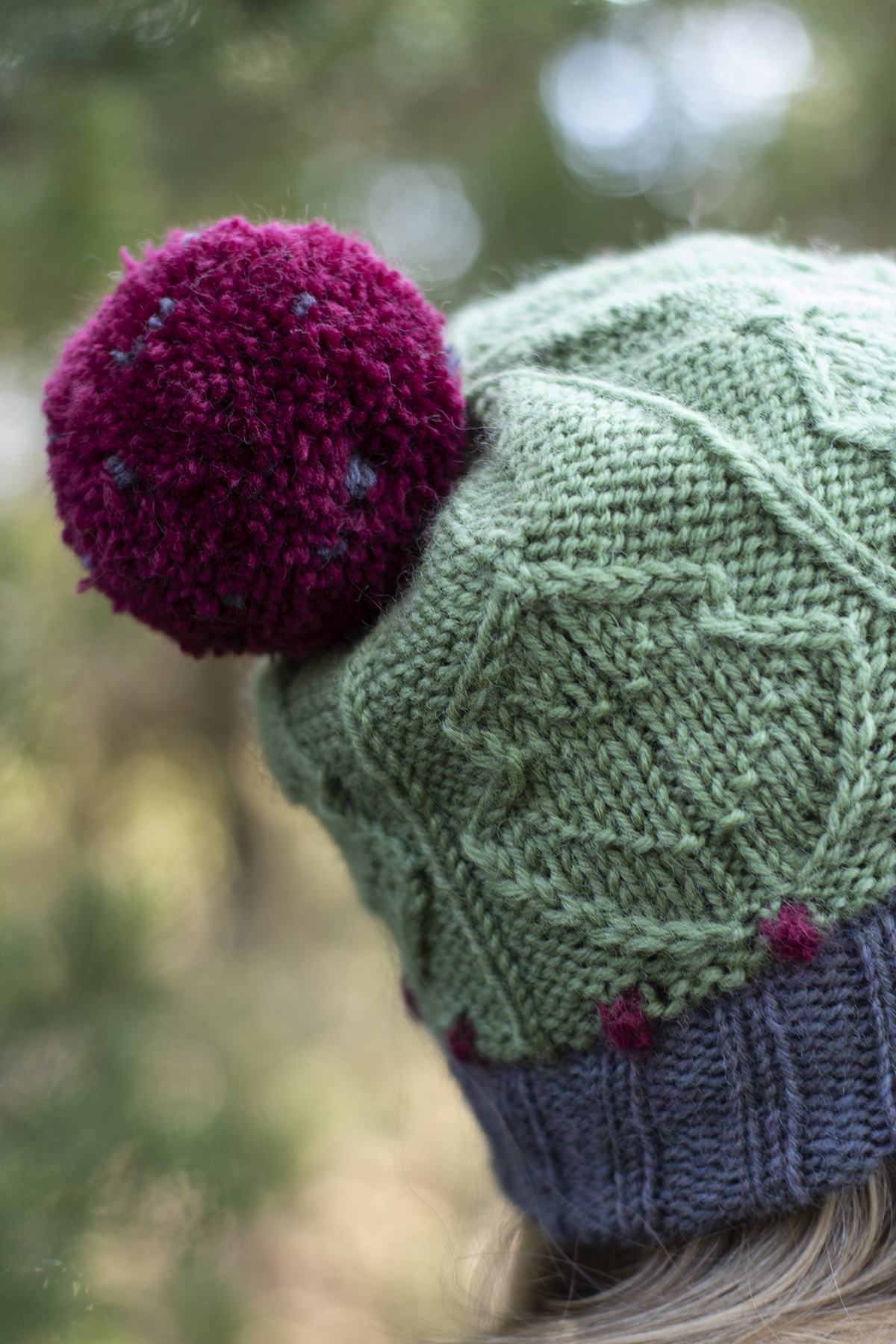
For your convenience, I’ve also created a tutorial. I hope you find it to be helpful! You’ll need to make your pom-pom before starting. If you haven’t done this before, don’t worry! You can find Amy’s tutorial on how to make pom-poms here (link).
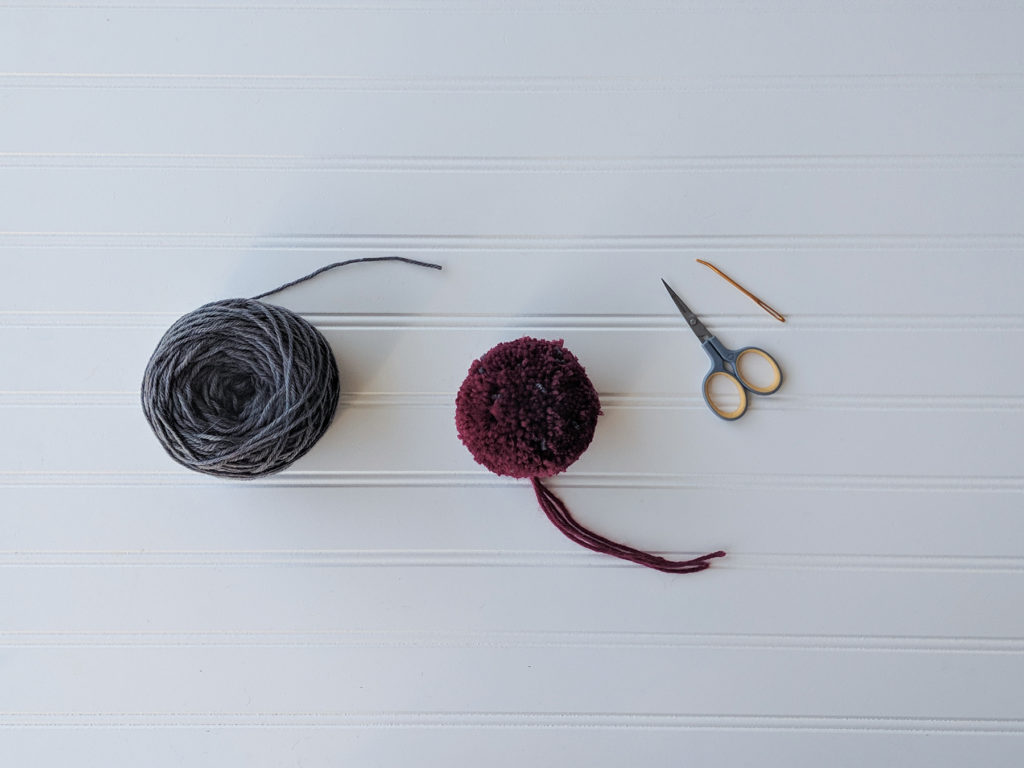
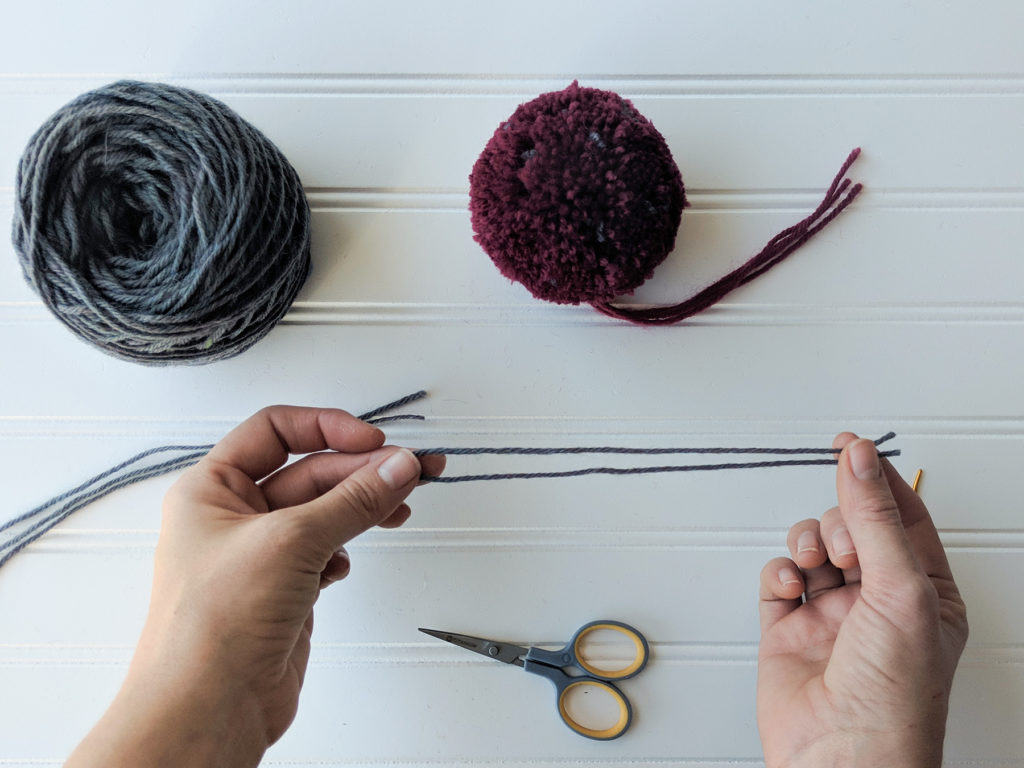
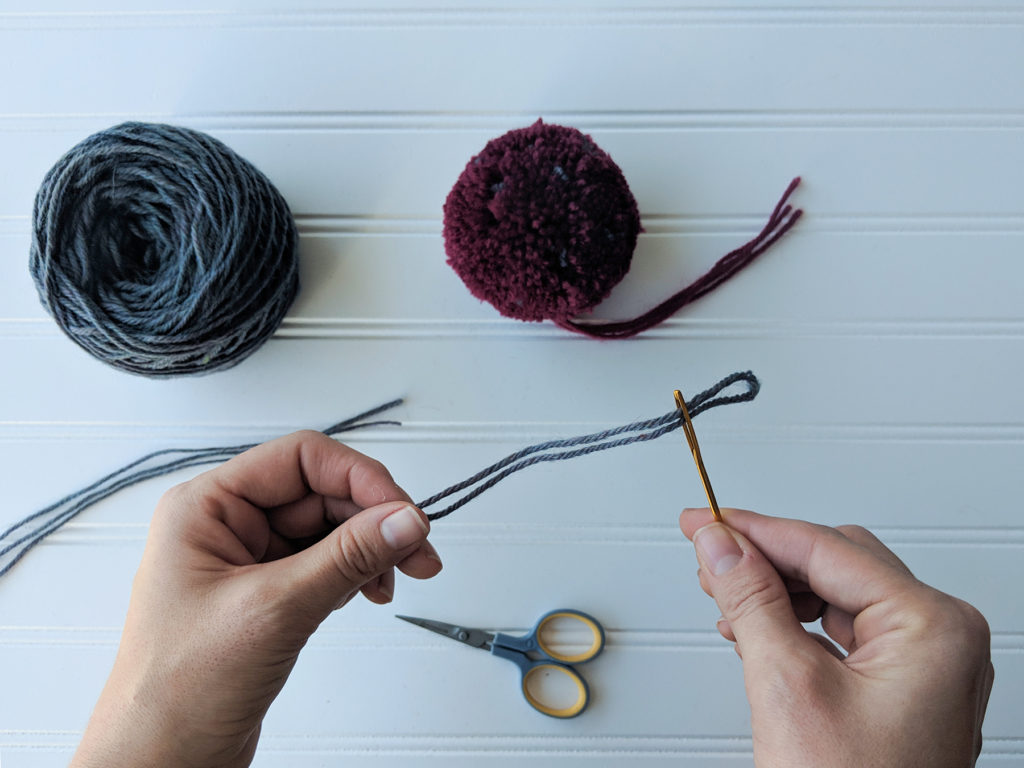
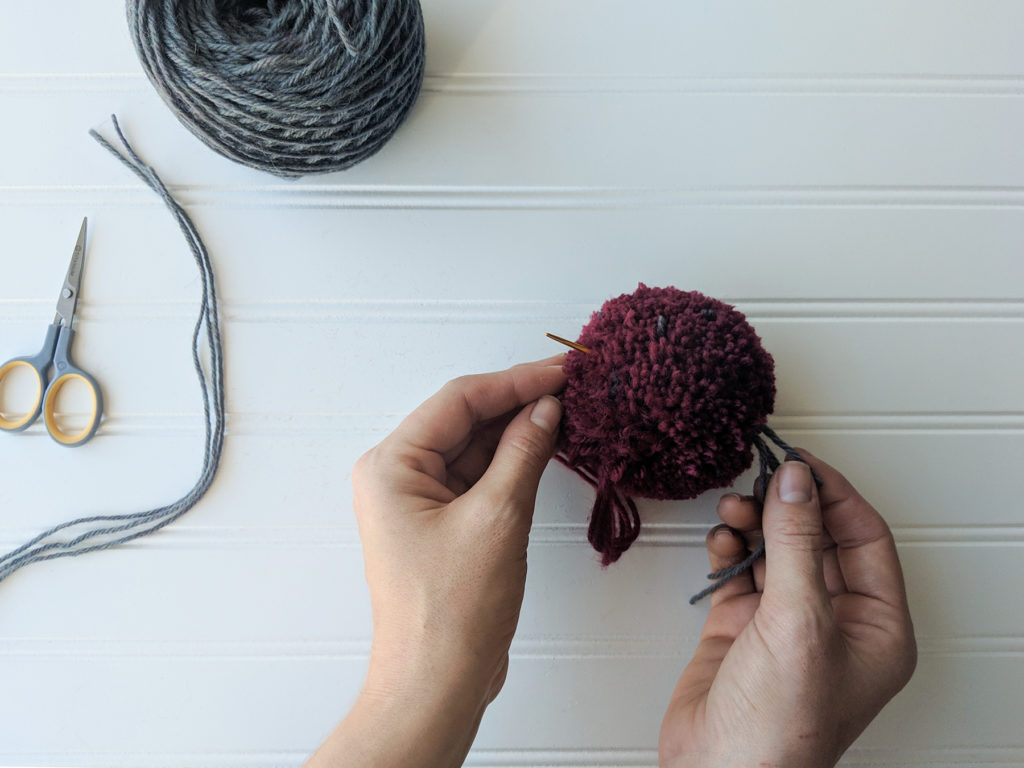
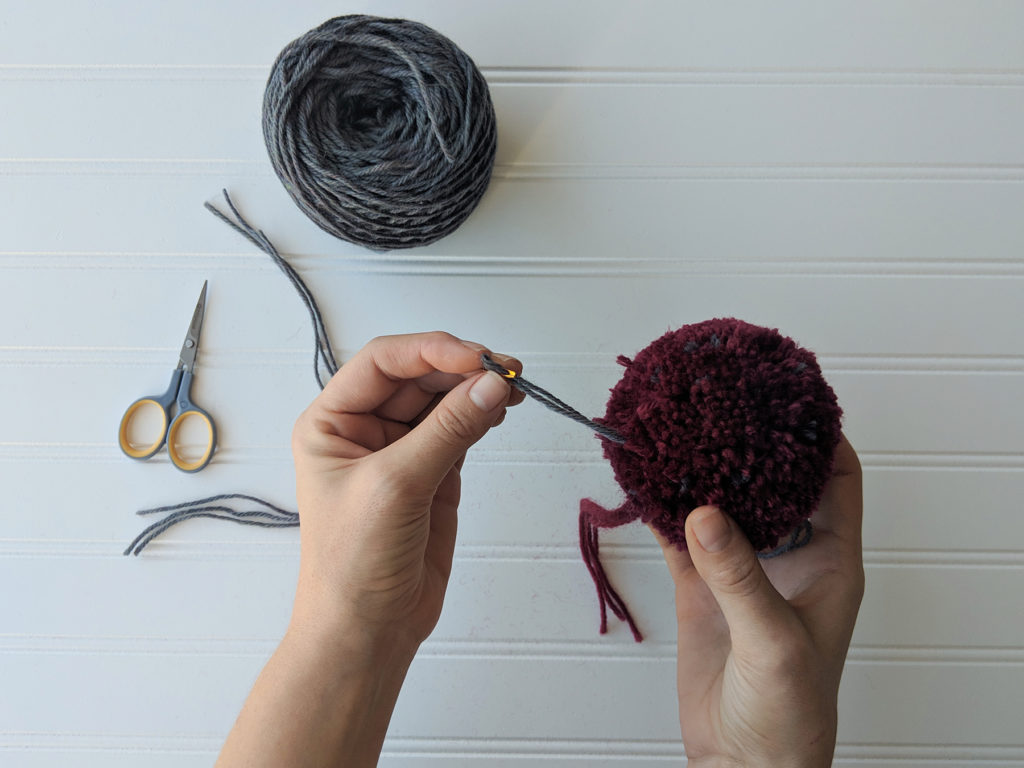
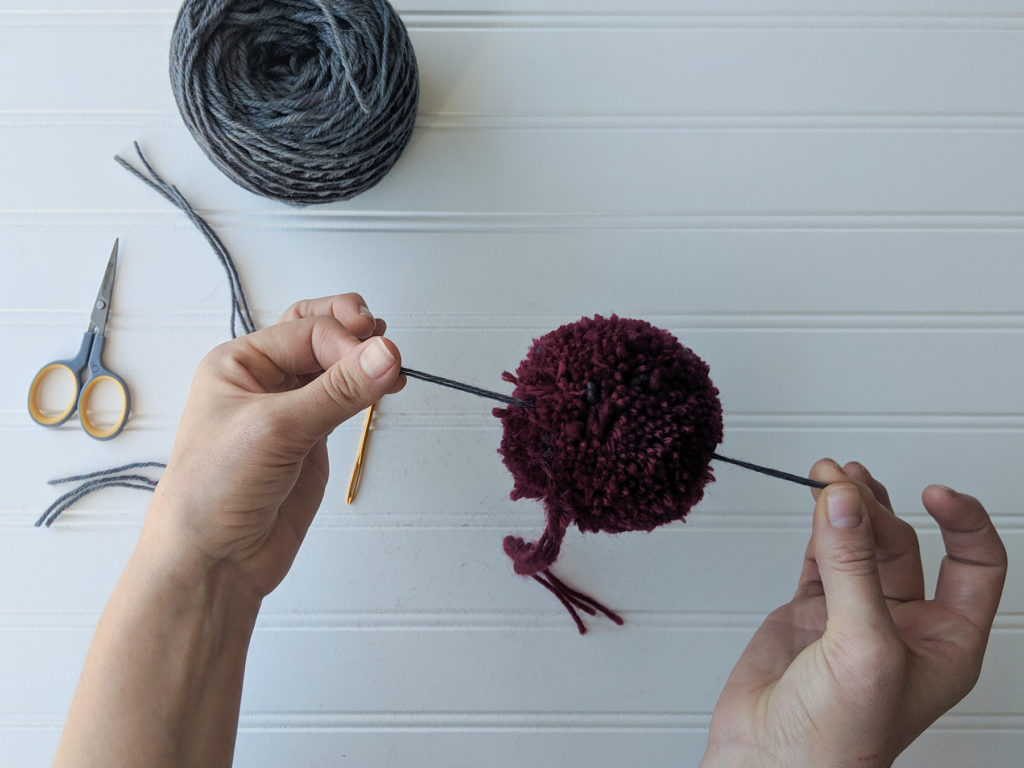
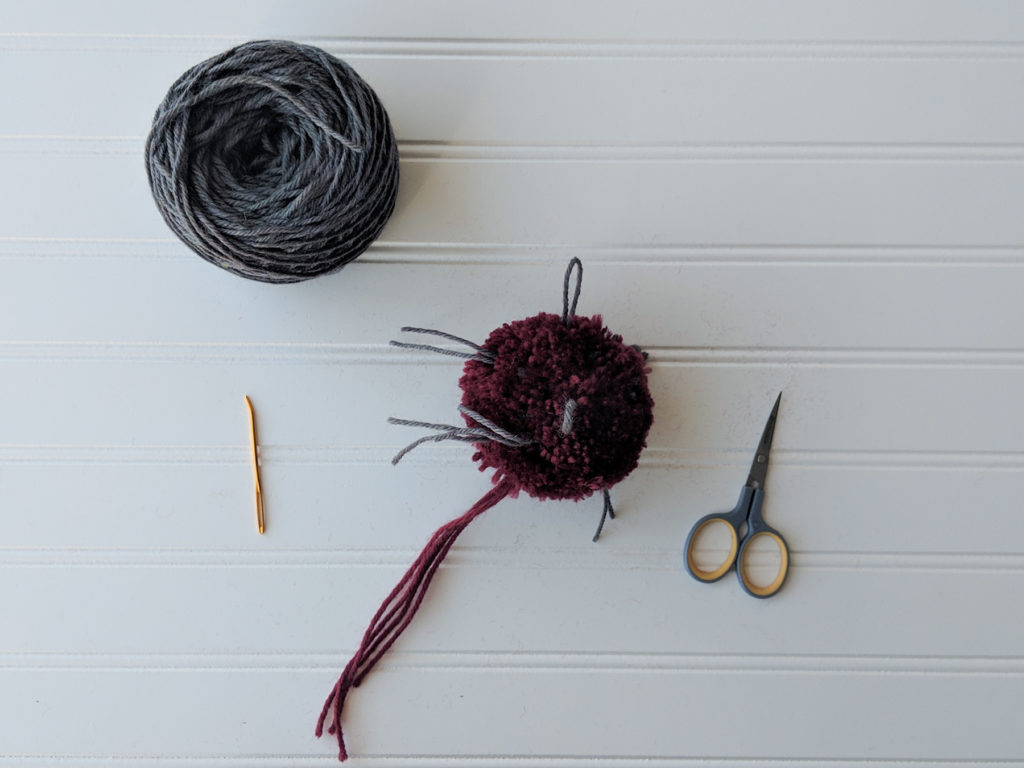
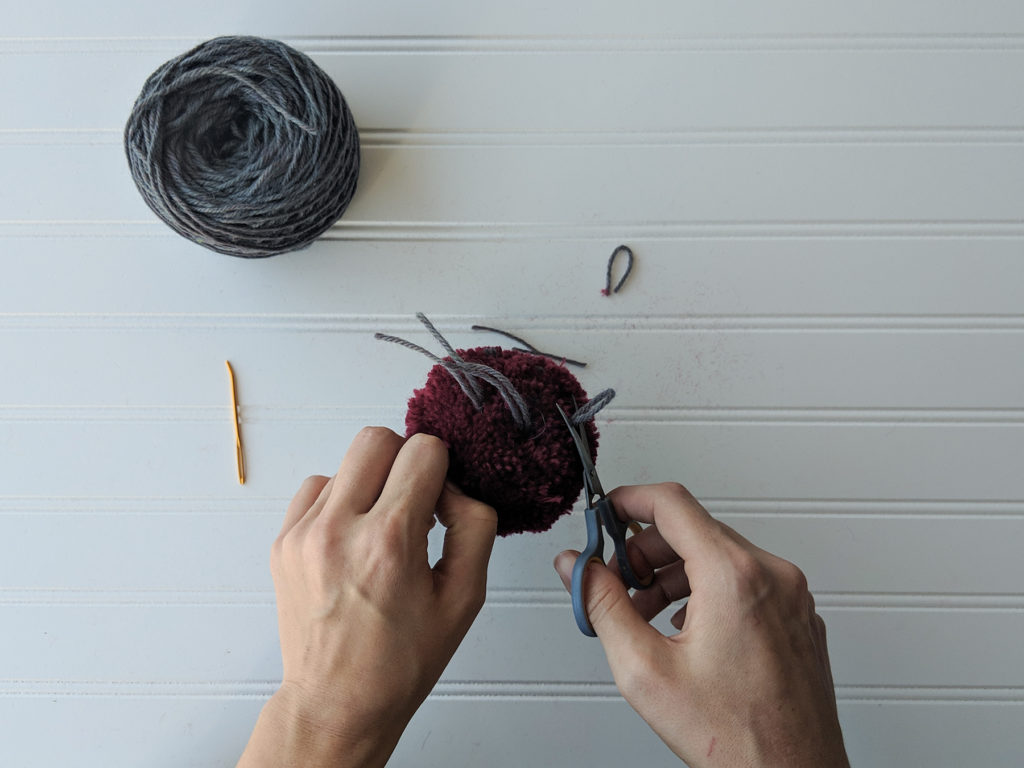
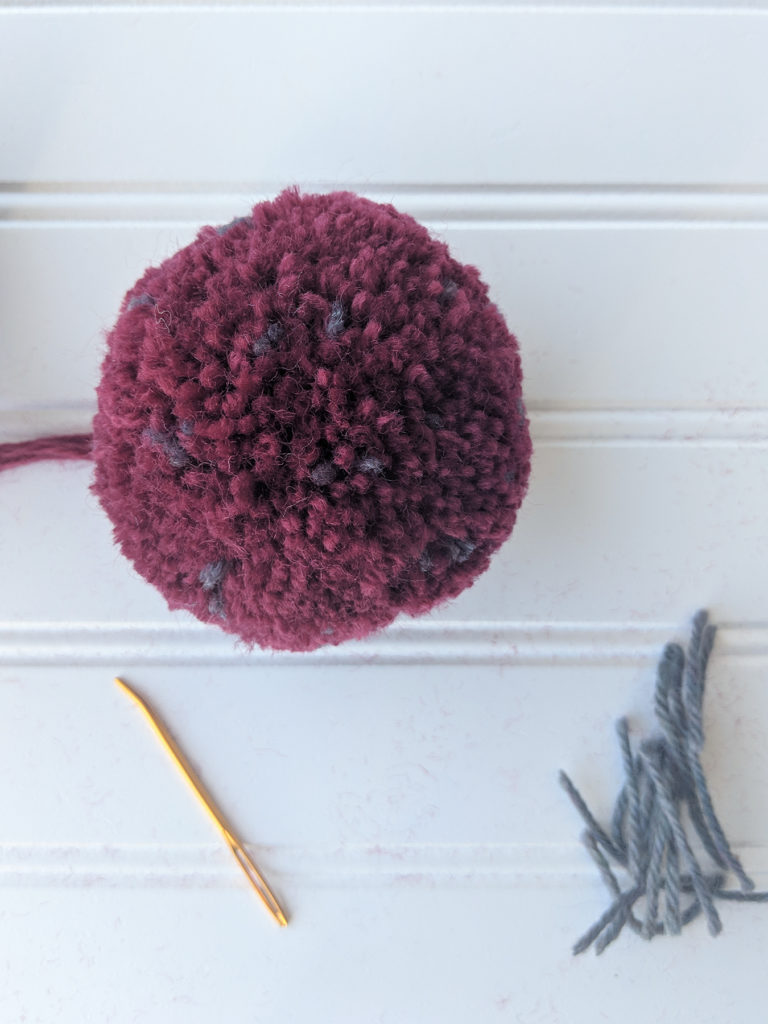
This is part 11 in a 12 part series highlighting designs from our 12 Days of Winter, Series 2 Edition.
Say hello to First Frost, an accessory set that is sure to warm you up this season!
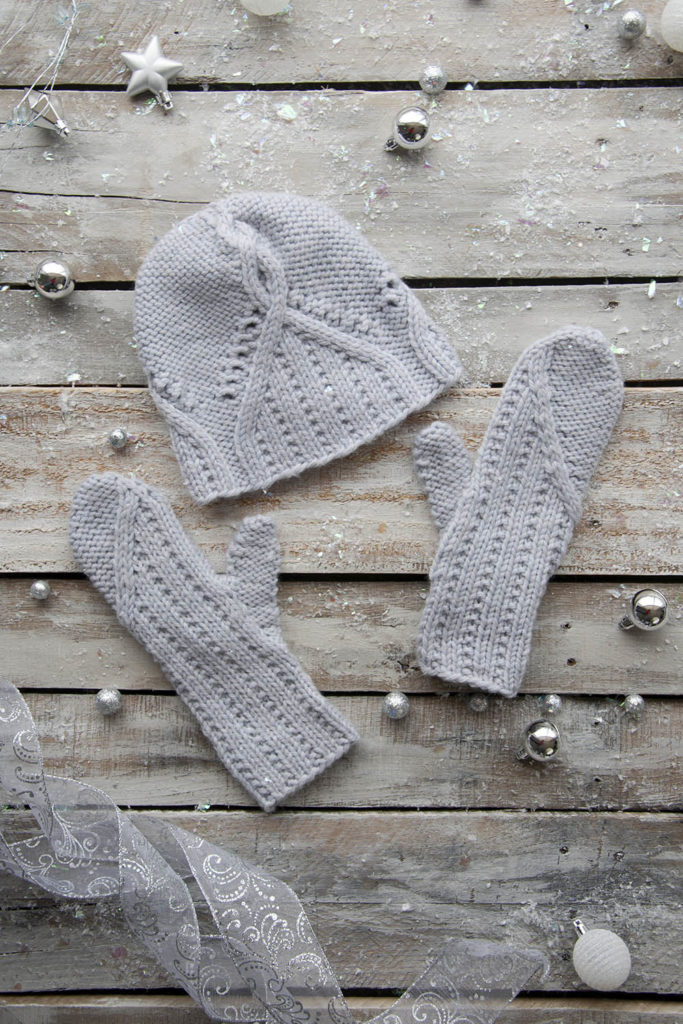
Ah, knitting. I love everything about it. However, some techniques sing to me more than others. Cables are one of those techniques. I can never get enough. If I can squeeze them in, I do. They don’t have to be complicated – but they can be. Either way, I love them. I want to knit cables as often as I want to eat Kit Kats or Reeses’ Peanut Butter Cups – all the time!
I actually really like using cable needles, but I occasionally lose them. The crevices on my sofa are likely home to several. So what do you do when you don’t have a cable needle or spare DPN handy? Do you find another project? NO! Of course not! You simply cable without a cable needle. I’m going to show you how with a quick tutorial!
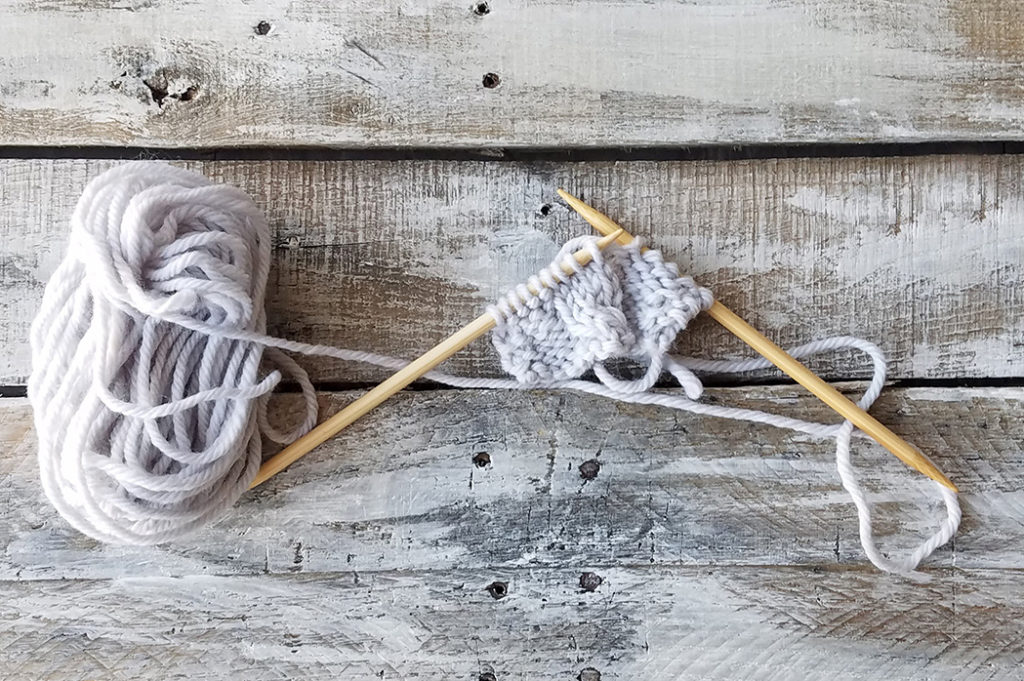
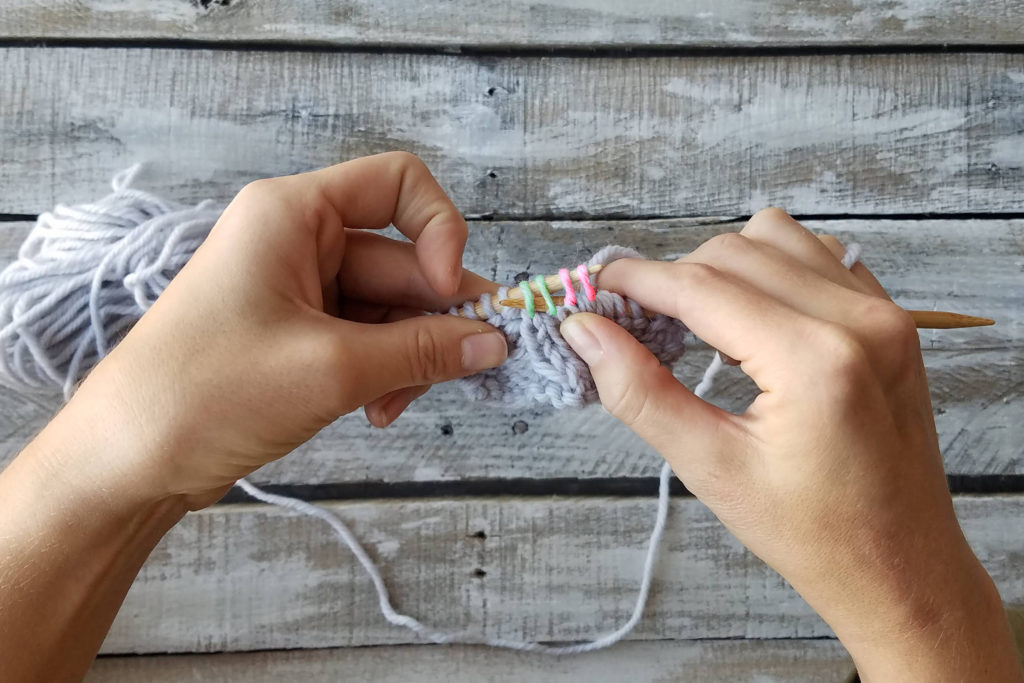
Going behind the first two stitches (red) on the left-hand needle, slip the third and fourth (green) stitches to the right-hand needle. The first two stitches will be in FRONT of the work. If you were working this as a right cross, the red stitches would be in the BACK of your work, and you would slip the green stitches purlwise from the front.
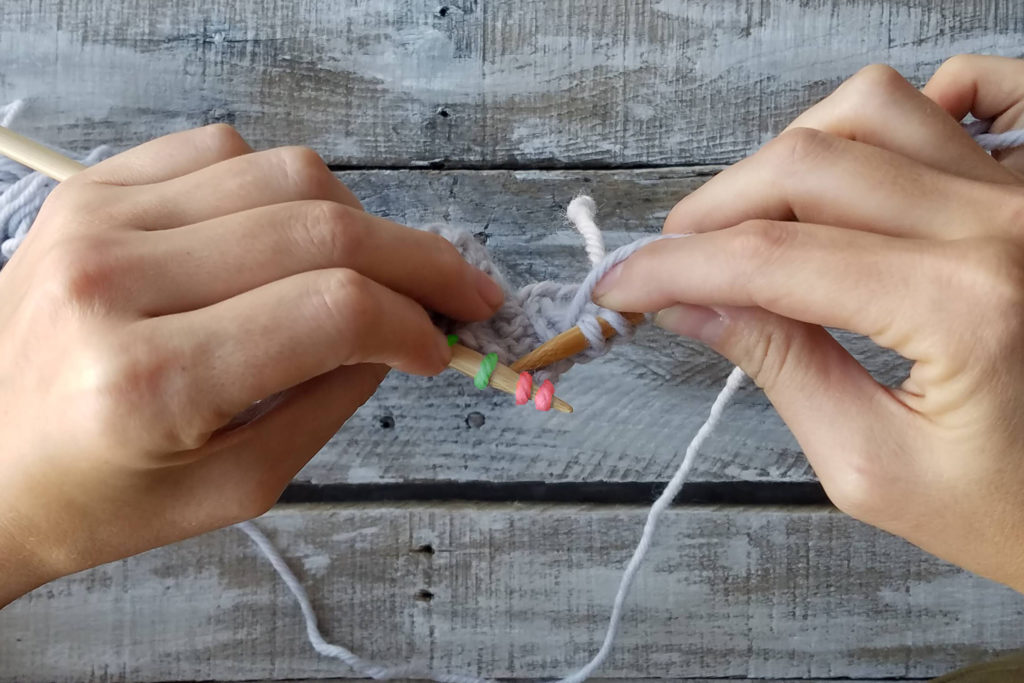
If the above photo scares you, just take a deep breath. It’s really not that scary! When you slip the green stitches, the red stitches will fall off your needle. That is okay – that’s what you want!
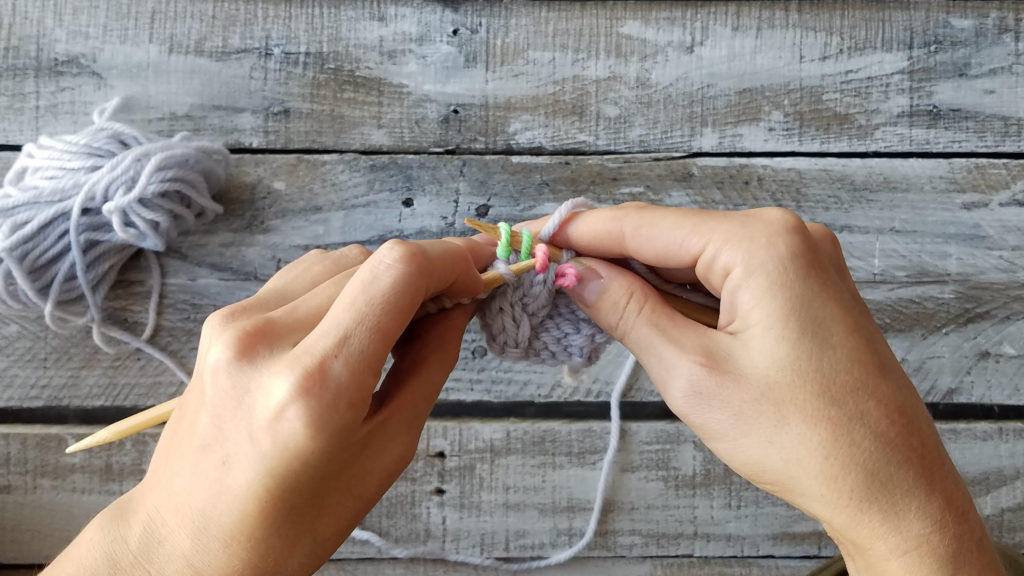
Carefully scoop the red stitches up with your left-hand needle. Breathe a sigh of relief – your stitches are safe again. Notice, we are simply re-arranging the stitches. * If you were working this as a RIGHT cross, the red stitches would be in the back of your work.
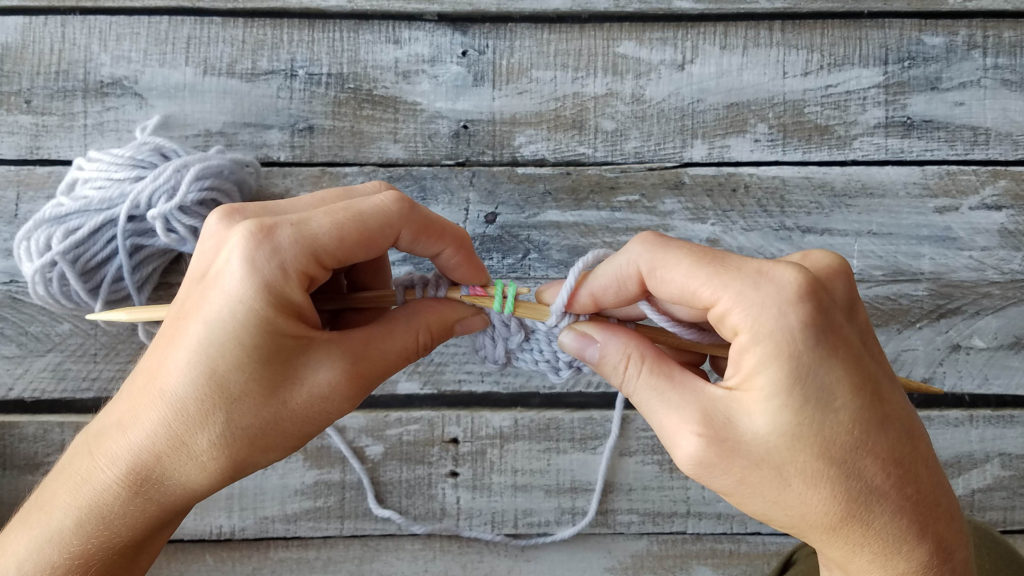
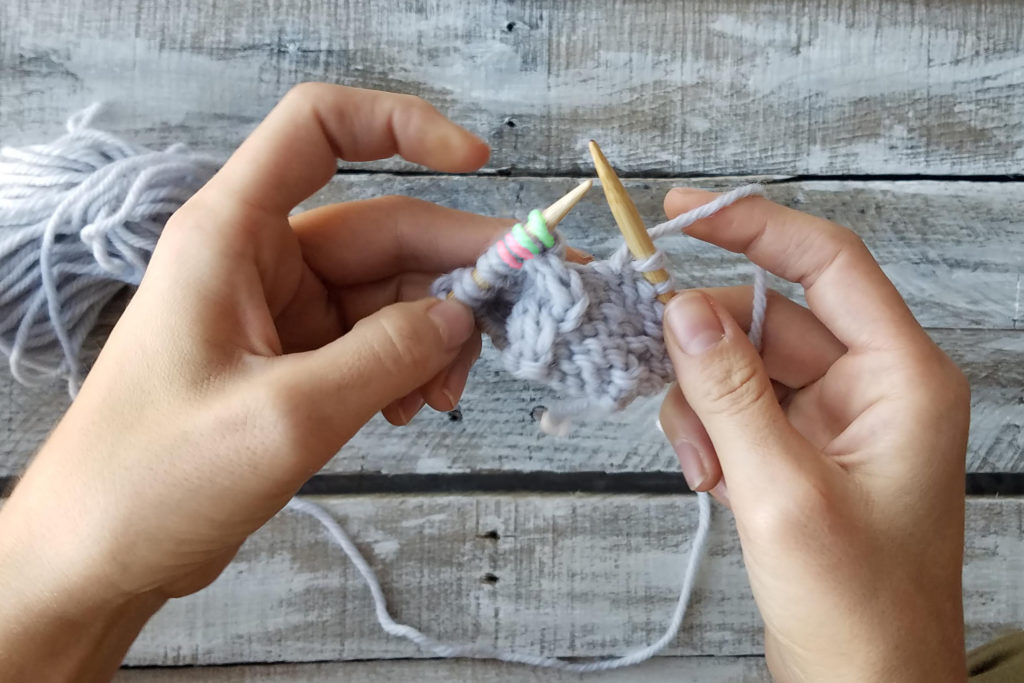
After the stitches are all back on the left-hand needle you may continue knitting as usual. You can already see the twist in your work.
That’s it! You’ve created a beautiful cable without a cable needle.
I realize that I’ve only included instructions for a 2×2 Left Cross here, but my hope is mainly to give you the courage to go forth without a cable needle. In fact, the pattern features left and right crosses; so if you choose to skip the cable needle you’ll have plenty of time to practice both.
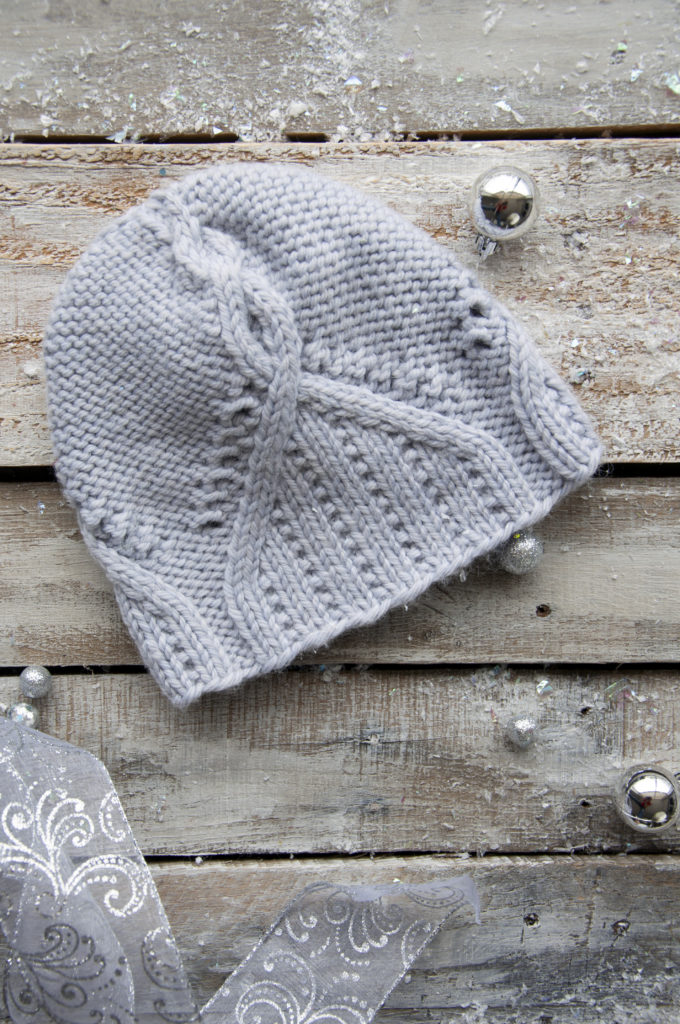
You can do this on any number of stitches, but I wouldn’t recommend working cables without a needle on anything more than 3×3 crosses. Any bigger than that and things can start to look sloppy and feel fiddly. Cable needles are great and help to maintain an even tension, but the same results can occur without them. Some find that skipping the cable needle feels faster, too. In personal projects, I go both ways. It depends on my mood and whether I can find my cable needle!
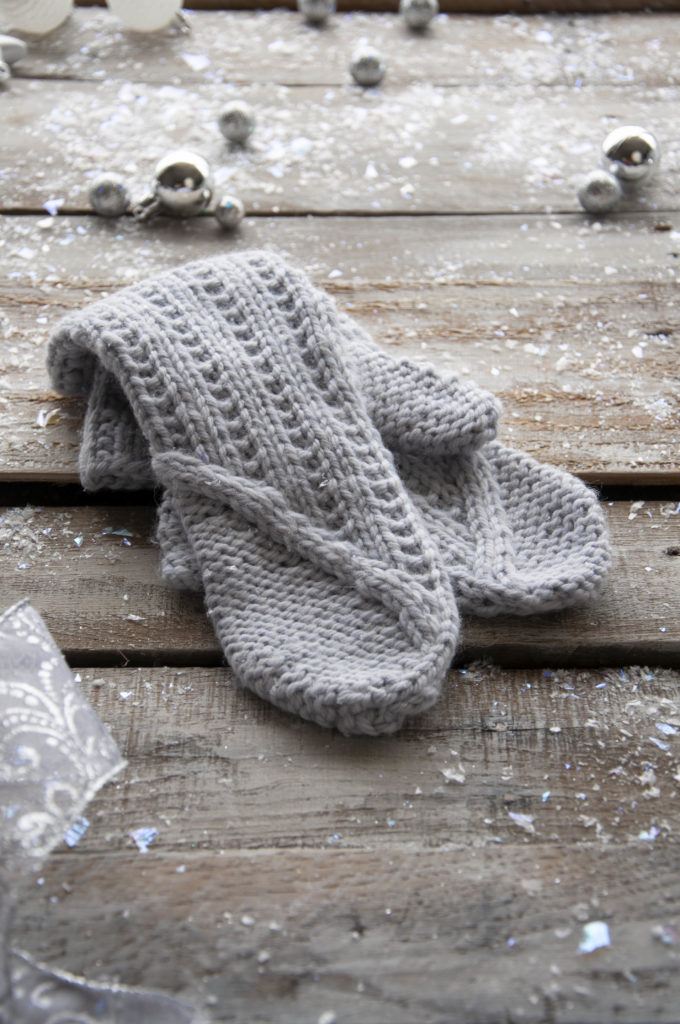
Remember, you can find the 12 Days of Winter Kit patterns on Ravelry.
You might remember that back in October I introduced the first post about my adventures in naturally dyeing our Superwash Merino Worsted Weight yarn. In that post (link), I gushed about how much I love the warm hues of autumn. Well, it’s spring now – though it certainly feels like summer here in Charlotte. That means it’s time to play with some yarns that are a bit more warm-weather friendly.
Today I’m using our soft and silky Universal Yarn Ready to Dye Merino Silk Sport Weight. It’s a gorgeous sportweight yarn with enough silk to make it appropriate for garments and accessories to throw over your shoulders on summer nights.
Whenever possible, I like to harvest dyes from the plants growing in and around my yard. I can choose what to grow, and there are endless ways I can experiment. Natural dyeing is, without a doubt, full of surprises, and you’ll understand what I mean when you see the results of my adventure with azalea dye.
I have a few azalea shrubs around my house. Just weeks ago they were full of brilliant pink blossoms, but now they’ve dried. I was plucking some weeds from my herb garden when it hit me: I have so many dried blossoms! Why not try to dye with them?
I grabbed a freezer bag and stuffed them full of the dried blossoms. Side note: If you use a freezer bag like I did (why didn’t I just grab a bowl?!), remember to simply rinse it and re-use it!
After collected my blossoms, I weighed them. I took into consideration the weight of the bag and ended up with approximately 37g. I could have collected more – I barely put a dent in my shrubs!
For today’s tutorial you’ll need:
Step 1: Create a mordant and soak your yarn. You can find specific instructions for creating a mordant in my first post (link here). If you’ve been following along and have a jar of mordant already, simply reuse the solution.
Step 2: While your yarn is soaking, prepare your dyebath.
You can see that the dyebath turned into a rosy color.
Step 3: Remove your yarn from the mordant bath, gently squeezing the excess mordant from the yarn.
Step 4: Carefully place your yarn into the dyebath.
Step 5: Allow the yarn to soak in the dyebath for about an hour. Turn off the heat and set the pot aside. Do not remove the yarn yet.
Step 6: Allow the yarn to cool in the dyebath – I let mine cool overnight.
Step 7: Remove your yarn and rinse thoroughly. I recommend stepping outside and giving it a few vigorous shakes to remove the remaining plant matter.
Before I reveal the yarn, I want to take a moment to emphasize how surprising natural dyeing can be. As you can see, the color of the dyebath was initially pretty pink. After about an hour it looked much more like a silvery-purple. I was really excited about those results. Even when the water cooled it remained a deep purple.
So, you might imagine my surprise when I discovered that my azalea dye turned into this…
Isn’t it the loveliest shade of green? I’m over the moon about the results of this dye experiment, and I’m sure I’ll be using azaleas for dyeing again soon. The transformation is pretty stunning.
For the last installment of our blog series on our 12 Days of Winter Kit Collection, we’re unveiling the Twining Vines Cowl. Twining Vines features Amphora. It is a perfect yarn for colorwork because its gorgeous halo blends the fibers together seamlessly. The effect is almost like an impressionist painting.
In addition to carrying two colors throughout this pattern, you’ll also need to trap your floats. It’s simpler than you might think. This tutorial is useful for any stranded project. If you’d like a closer look at the images, simply click on them.
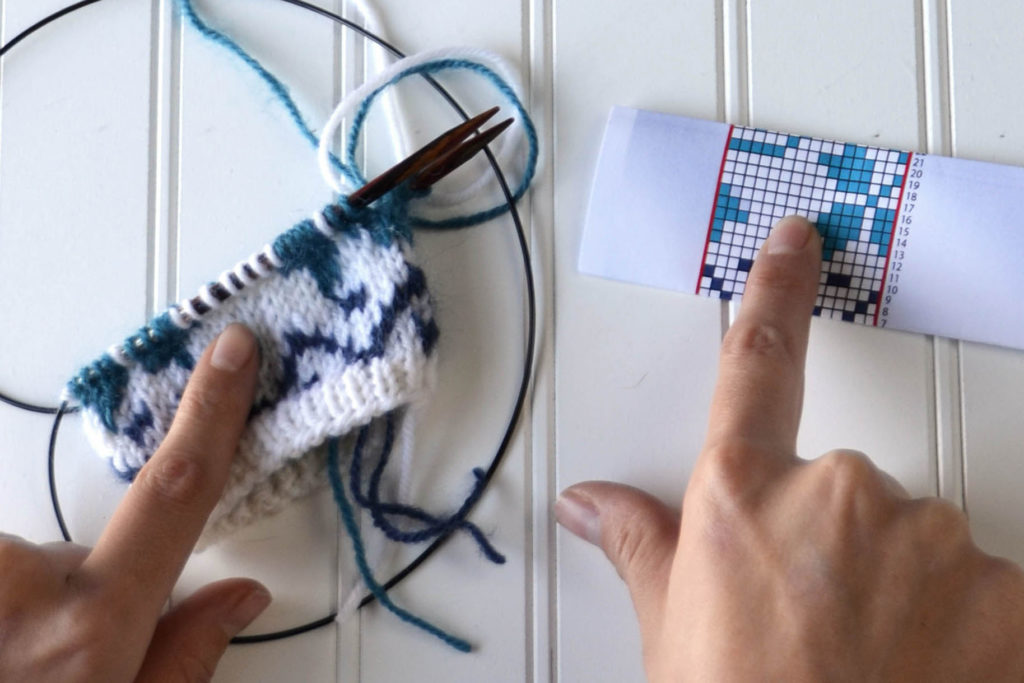
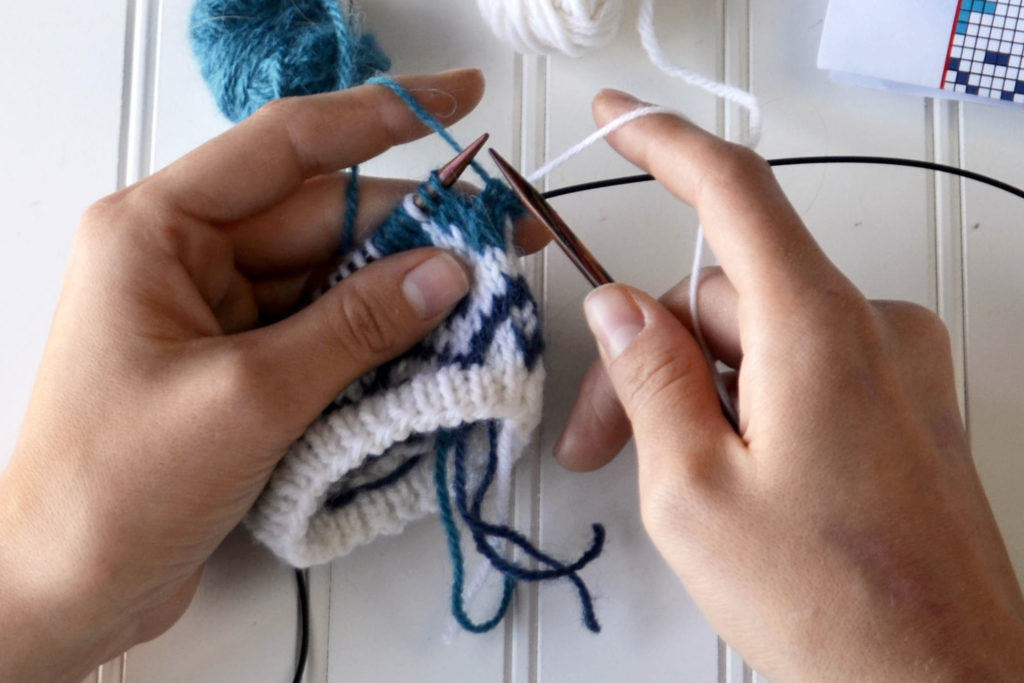
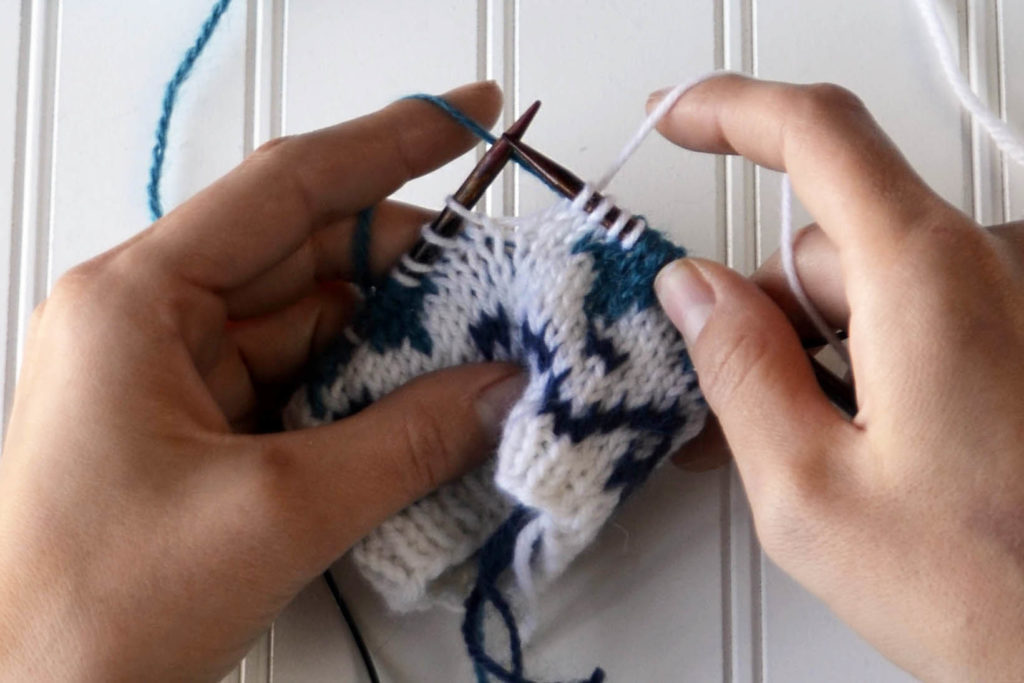
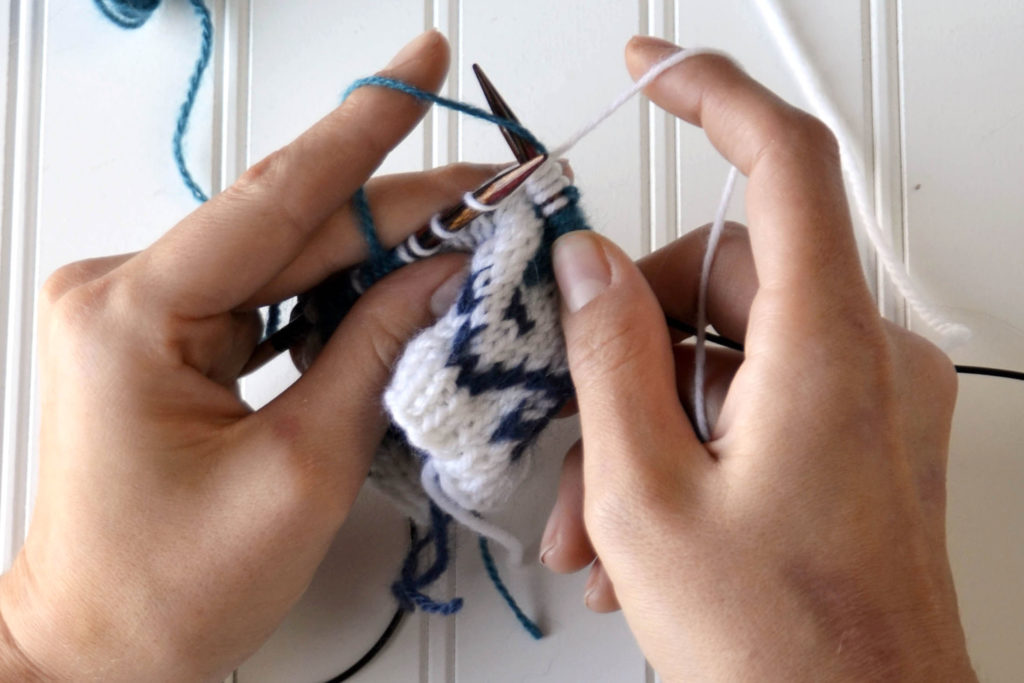
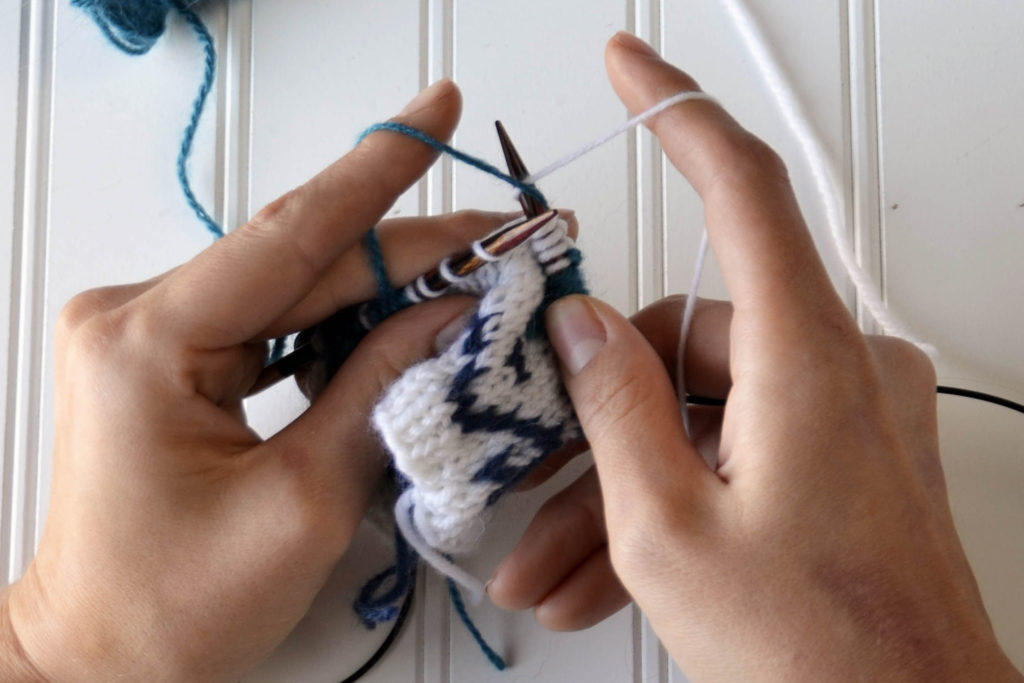
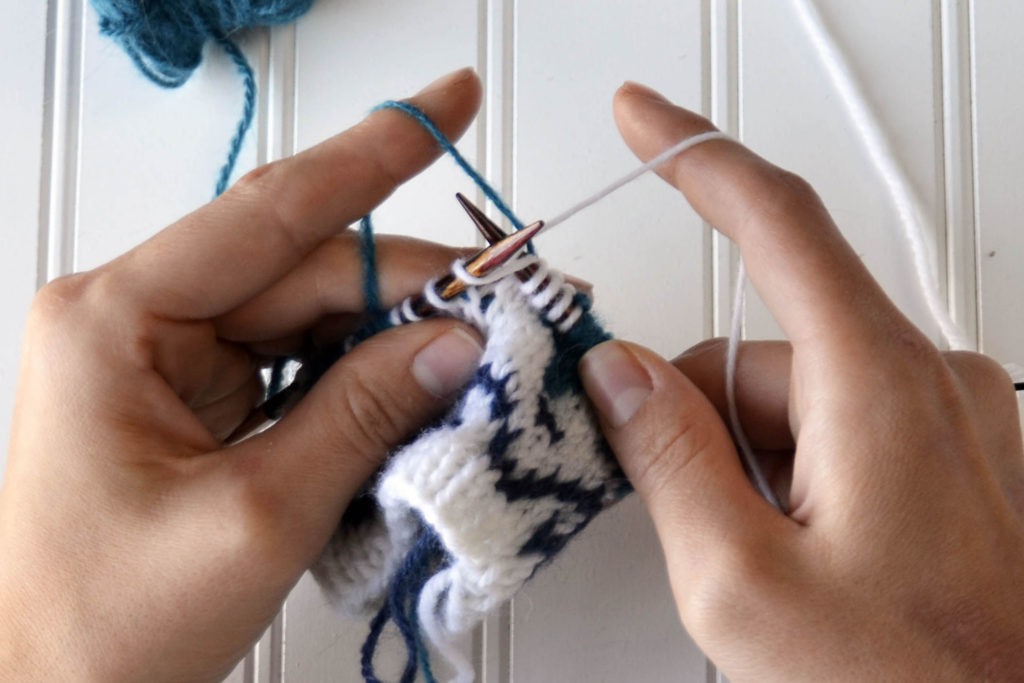
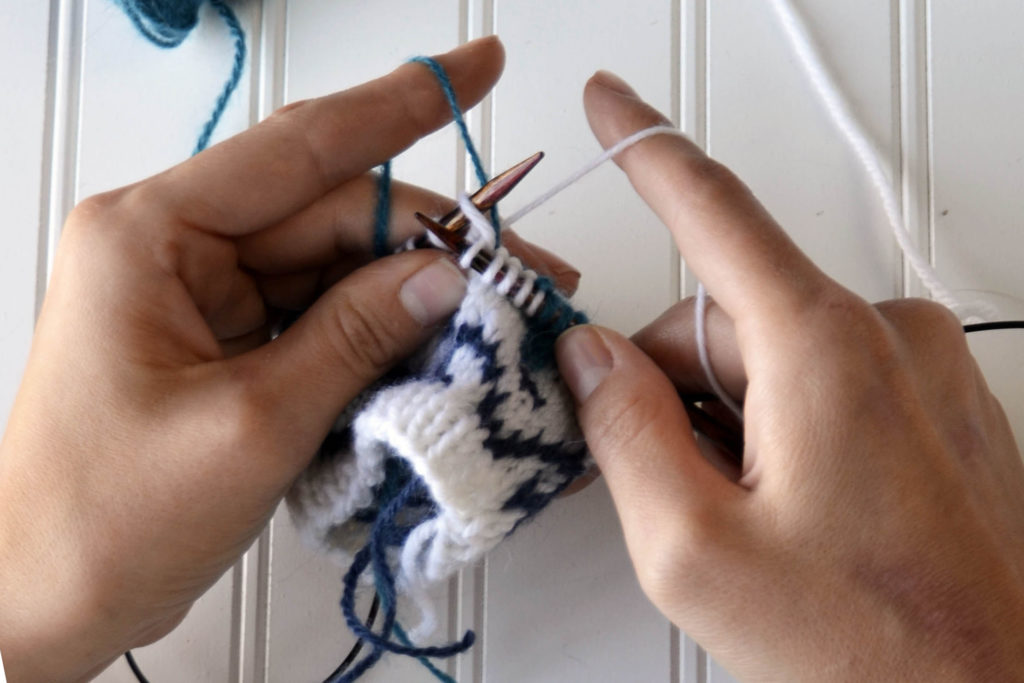
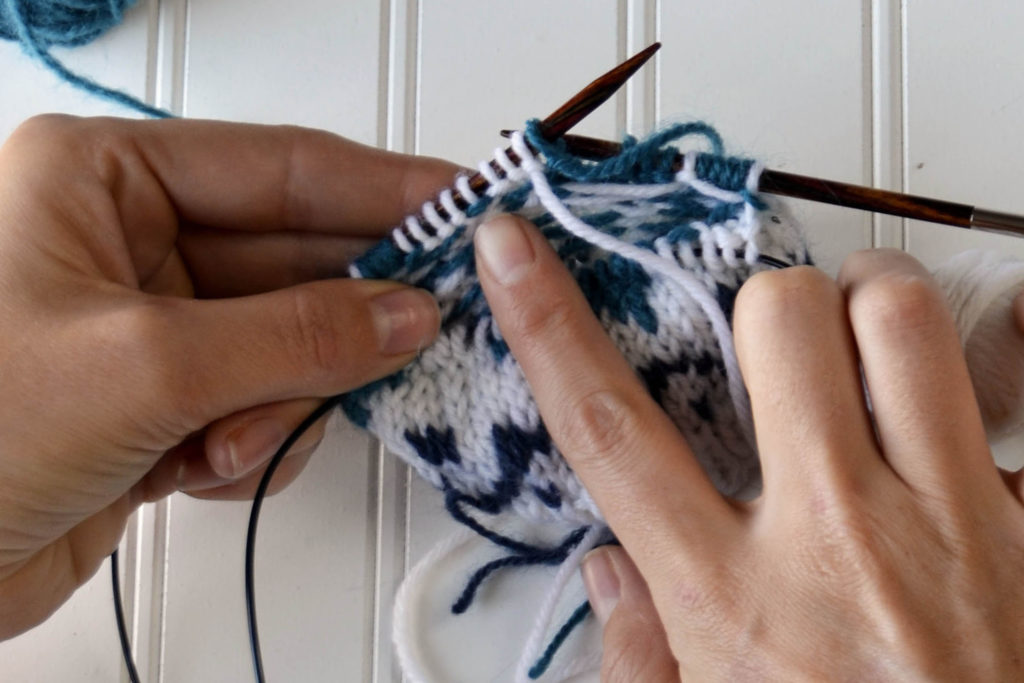
Just like that, we’ve released all 12 of the patterns featured in our 12 Days of Winter Collection. We sincerely hope you’ve been enjoying our blog series highlighting each pattern. You can find the Twining Vines kit on our website here.
Now that you’ve seen them all, I’d also like to emphasize that tomorrow is Small Business Saturday. What better way to show your support for your local yarn shop than by stopping by to pick up one of our kits on Small Business Saturday?
It’s hardly winter without stockings, amiright? Three balls of yarn make three stockings in the Stripe Stockings kit. Knit in Deluxe Bulky Superwash, these will virtually fly off your needles.
The knitting in these is relatively simple – mostly stockinette with a bit of garter and an i-cord bind-off. There are enough details to keep a seasoned knitter entertained, but are simple enough that they would also make a good first sock project.
One feature that I’d like to explain more in detail is the afterthought heel. Unlike the common short-row heel which is knit as the rest of your sock is knit, an afterthought heel is added later after the rest of the sock is complete. There are various reasons for choosing this type of heel. My reasoning for doing so in this project was both to keep my stripe sequence uninterrupted and also to make the most of my yarn.
Grab your needles and yarn and let’s get to learning!
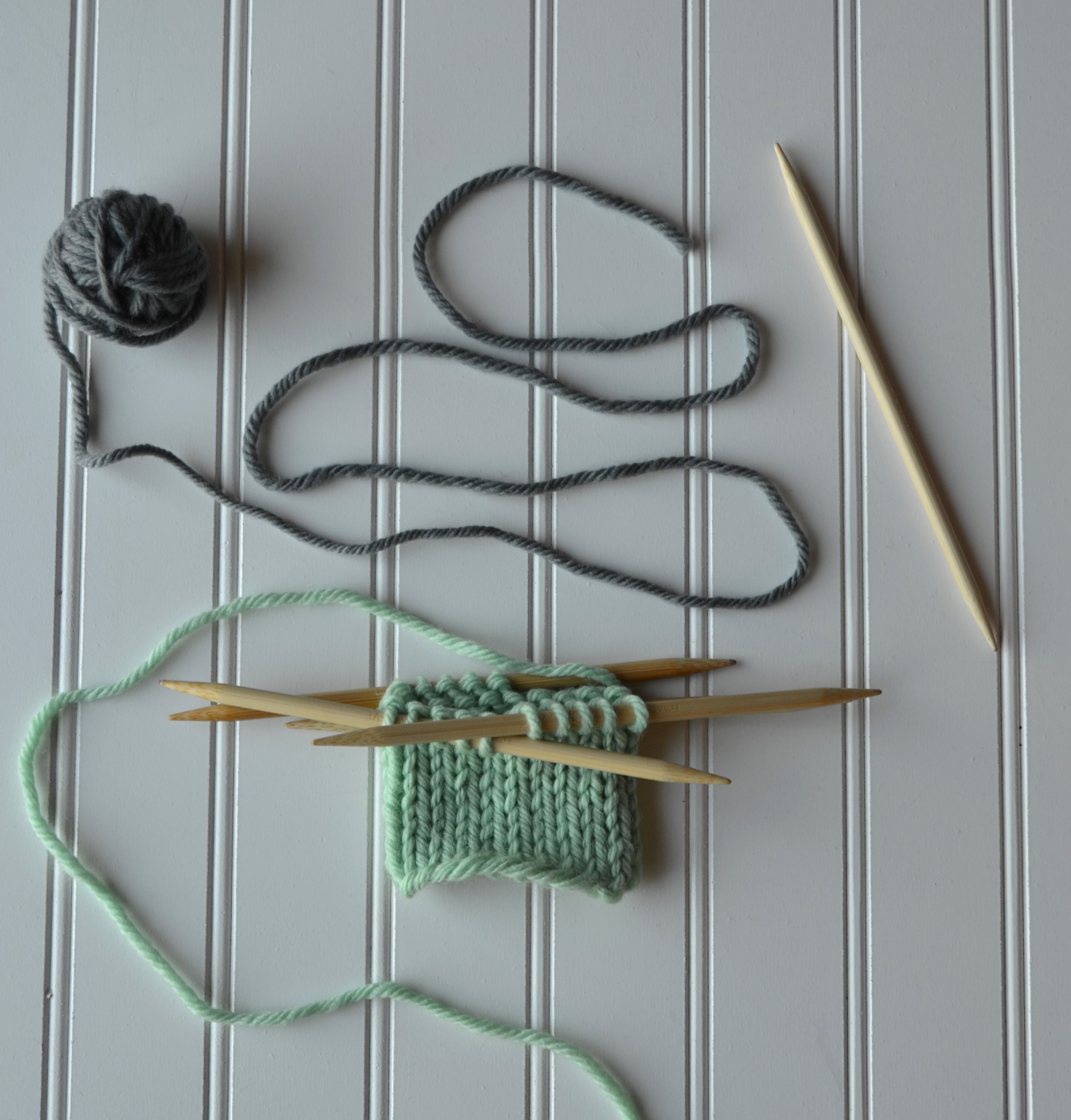
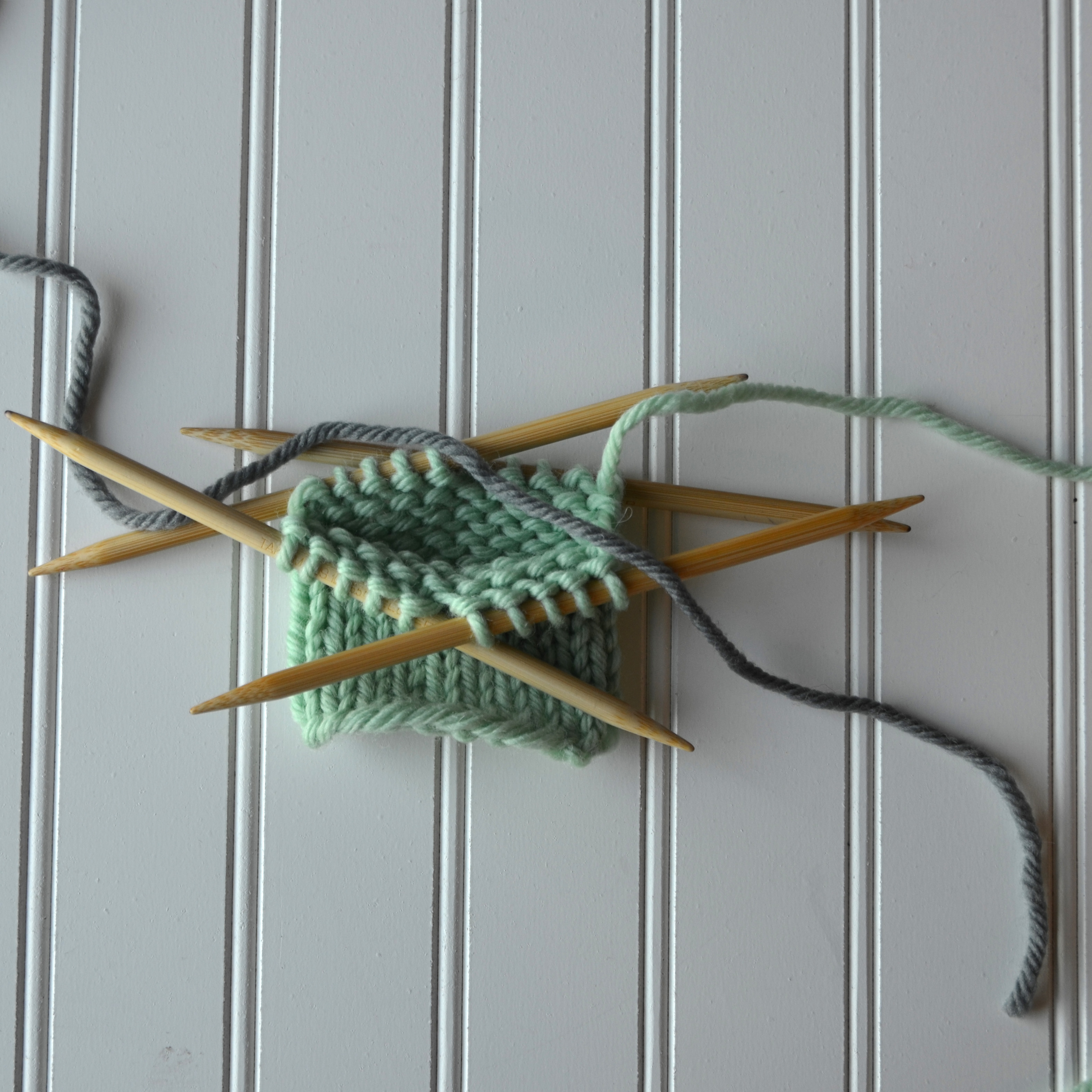
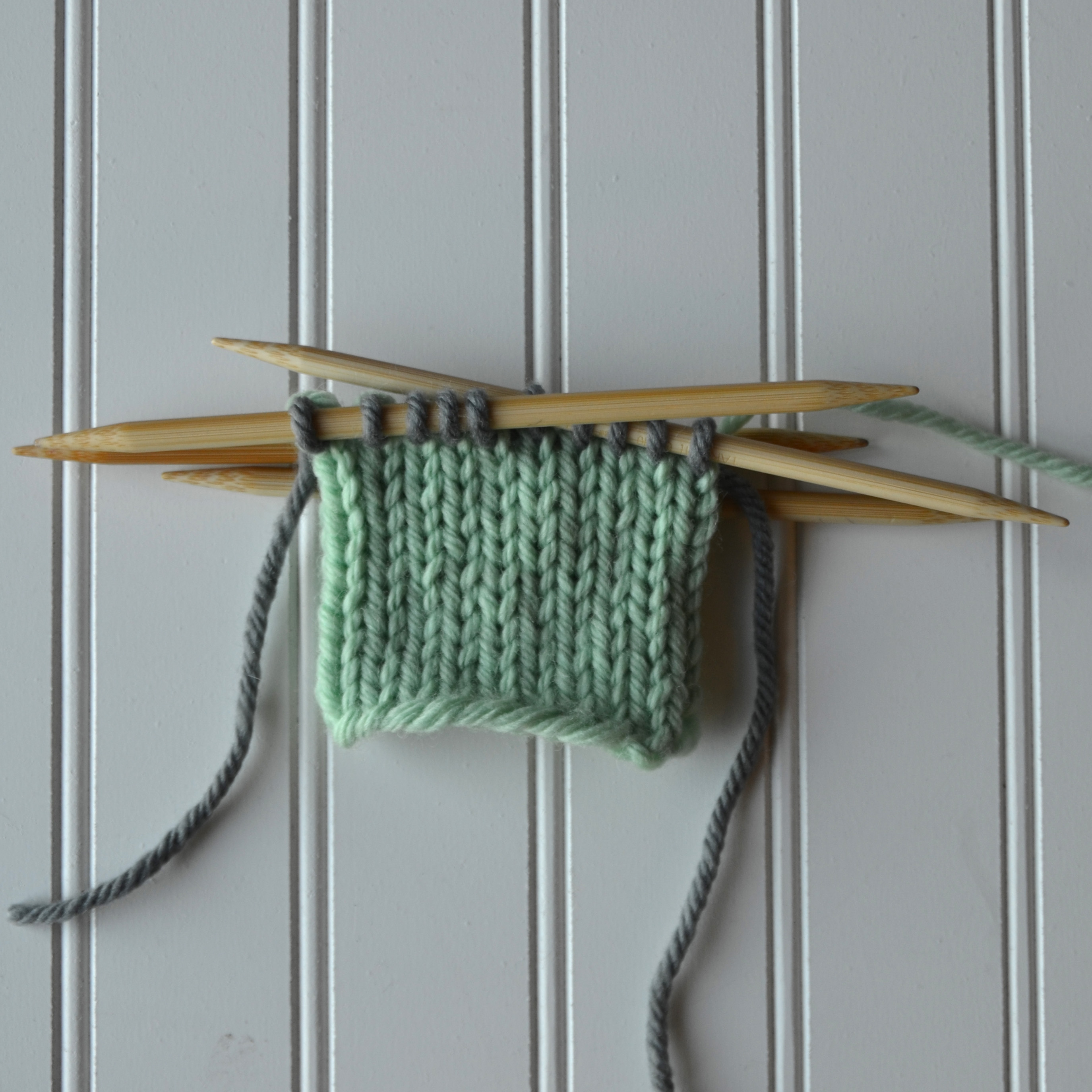
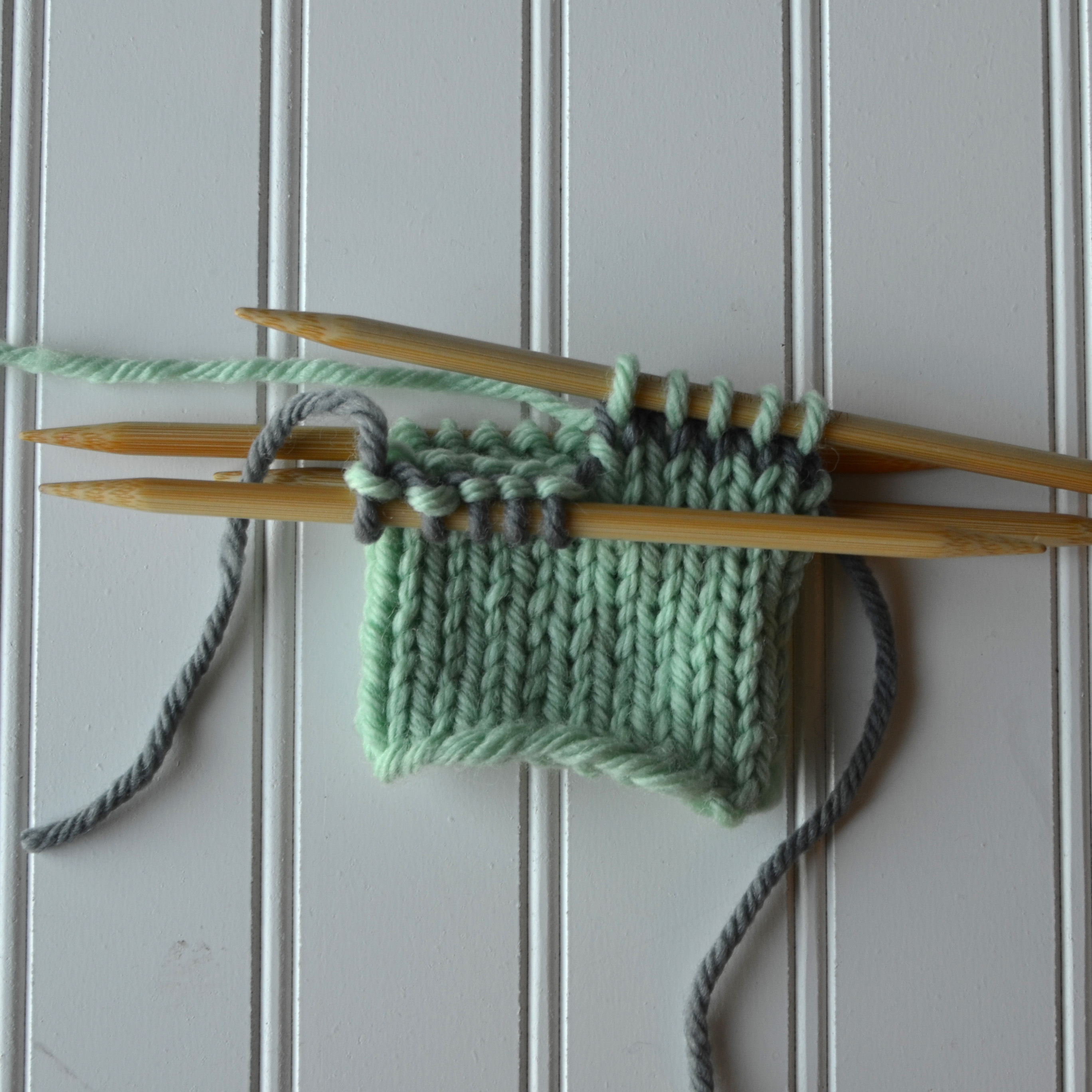 Continue to knit the rest of the sock/swatch. Knit across the waste yarn stitches and on around.
Continue to knit the rest of the sock/swatch. Knit across the waste yarn stitches and on around.
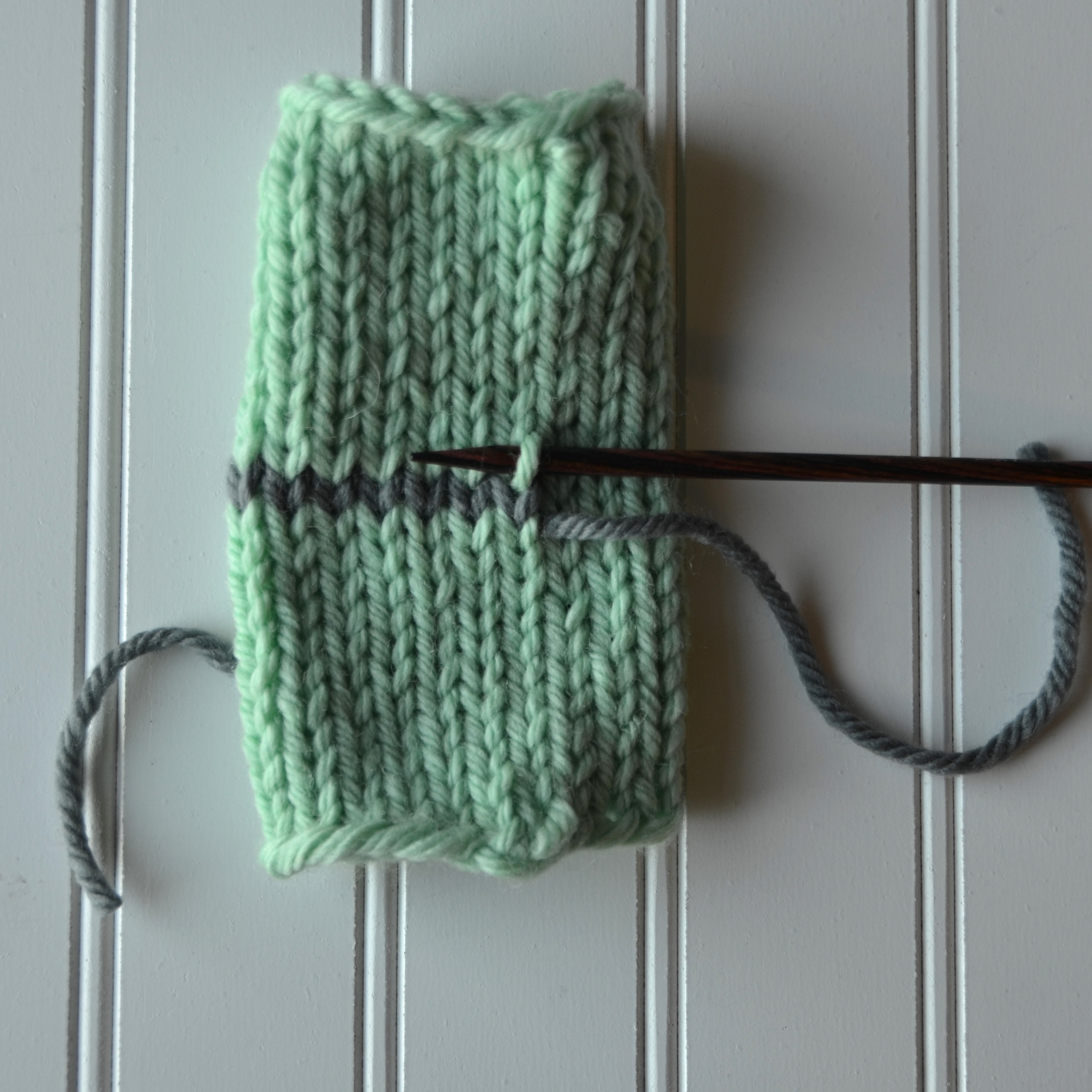
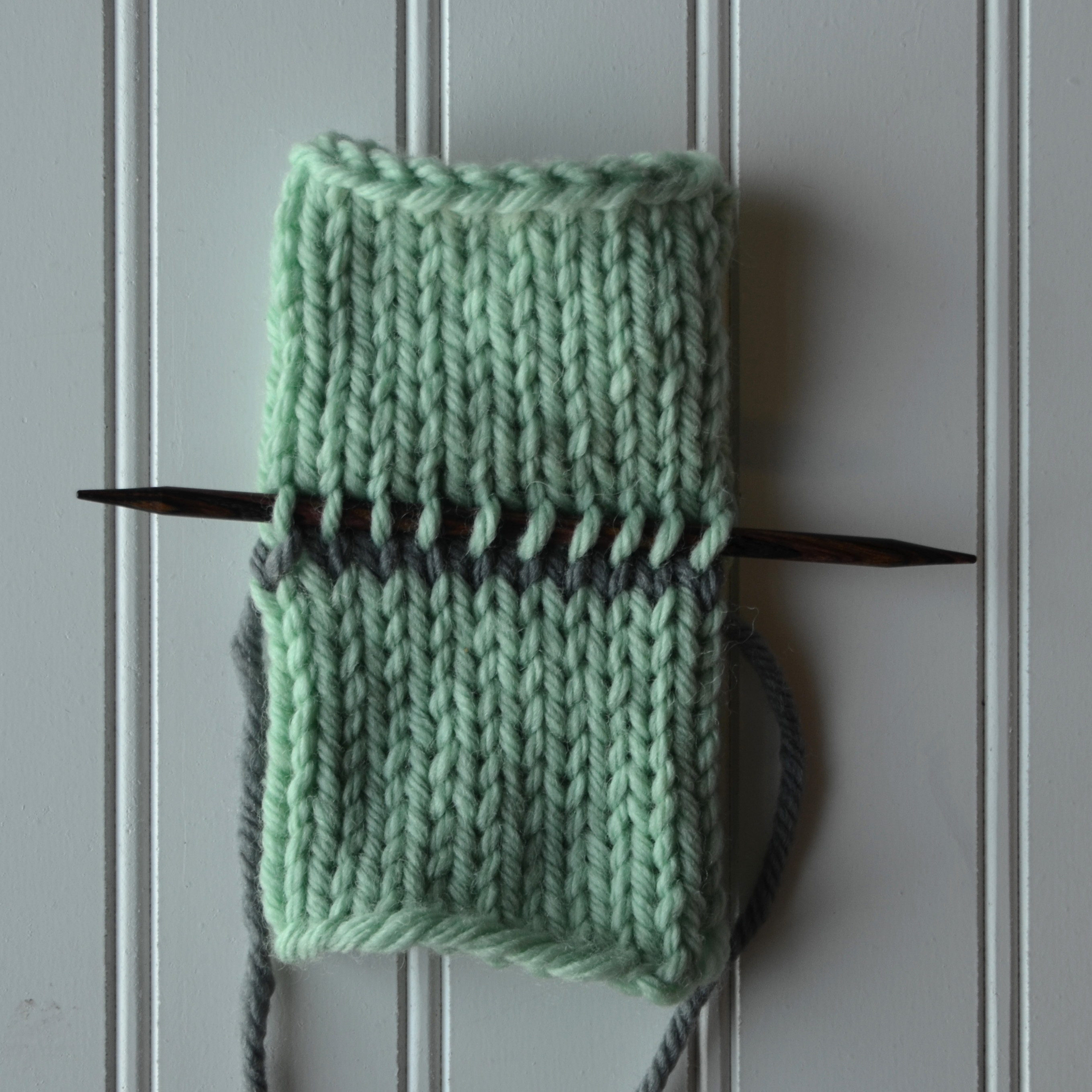
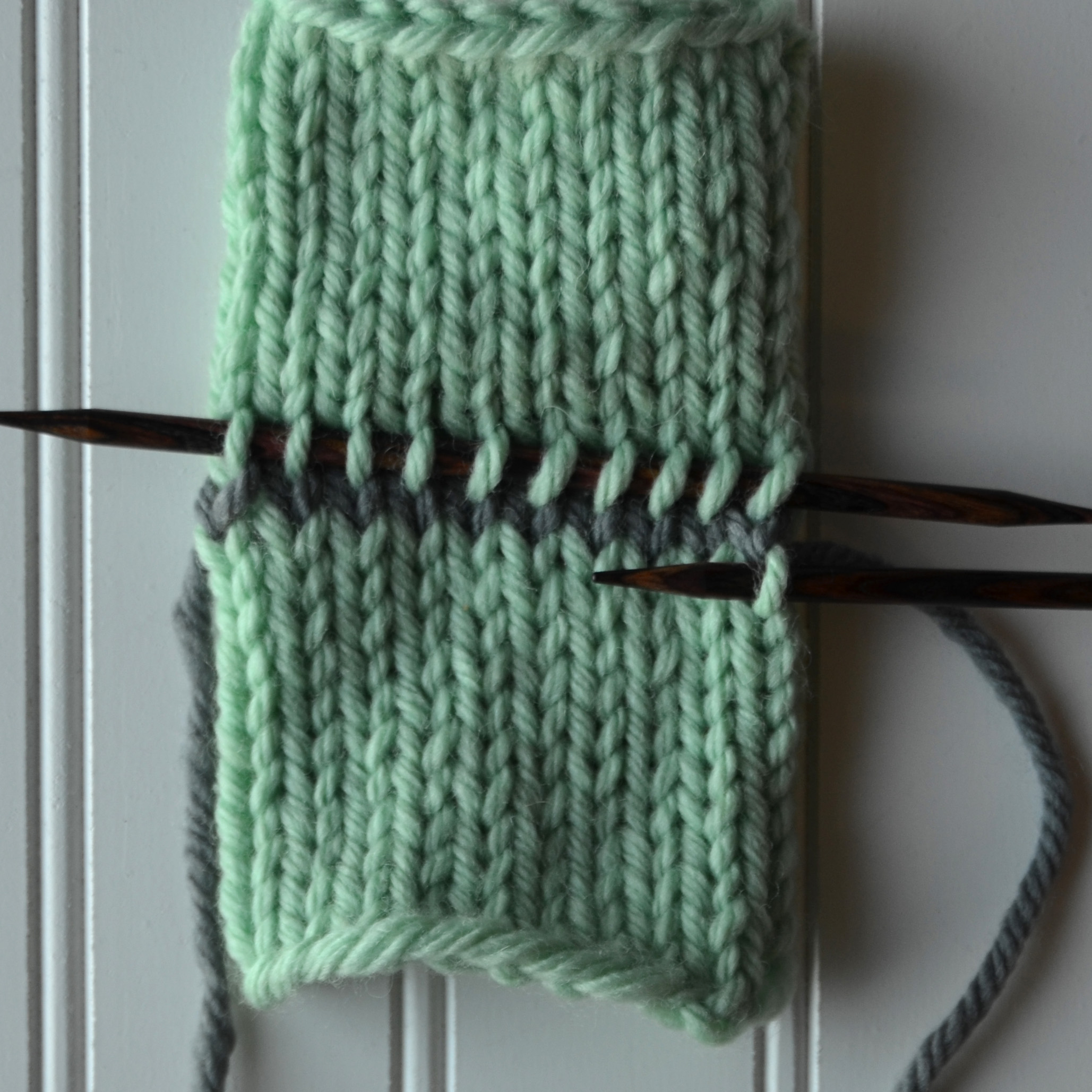
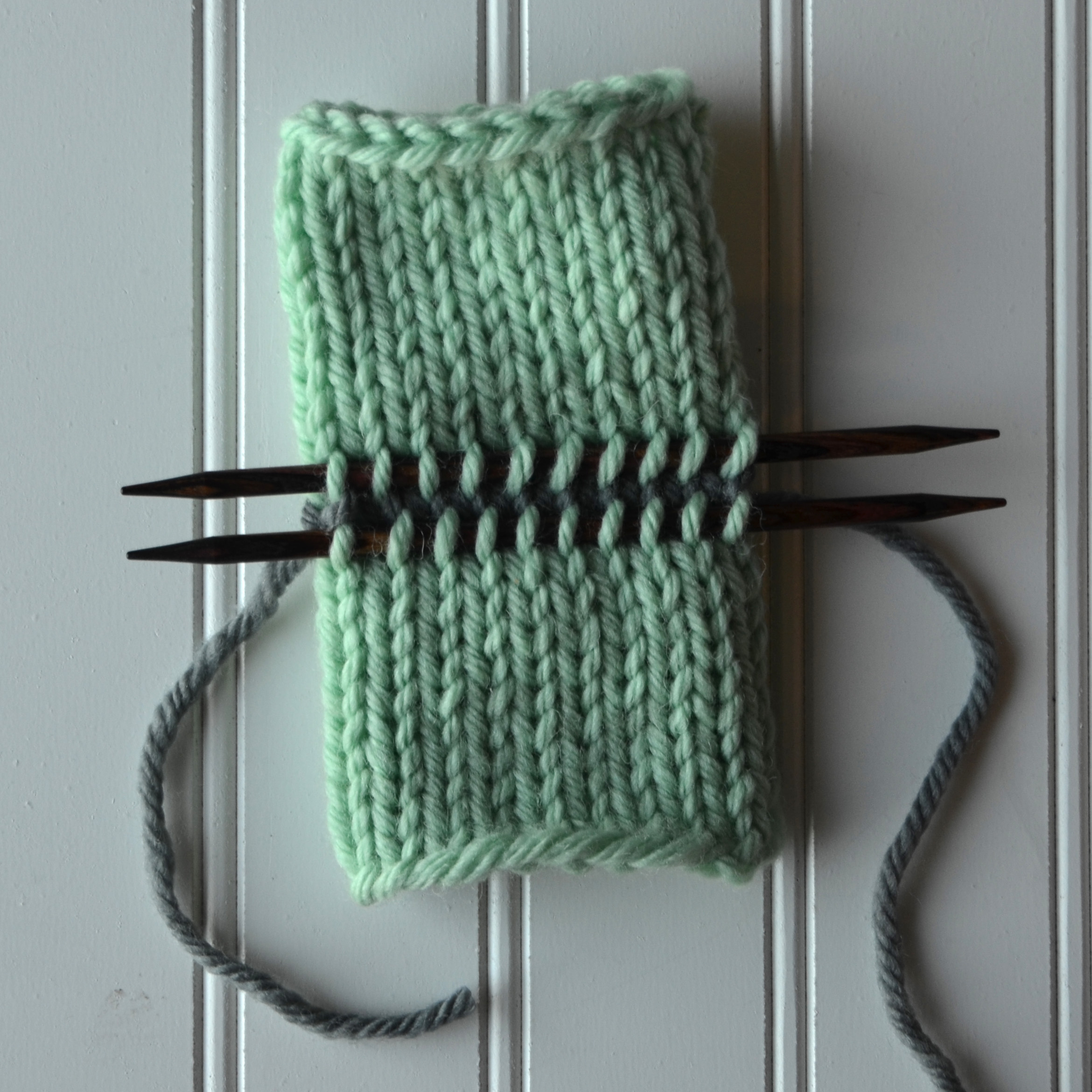
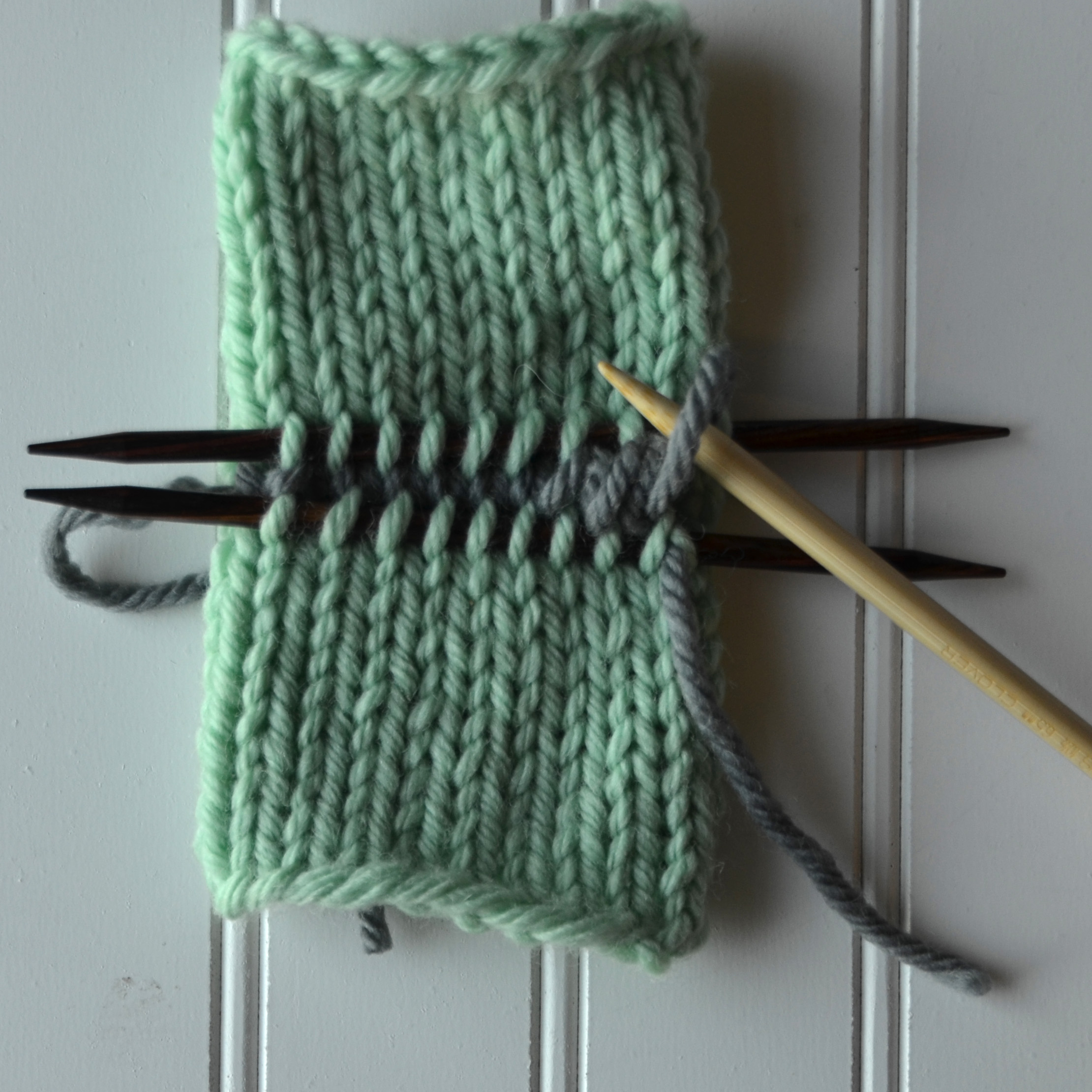
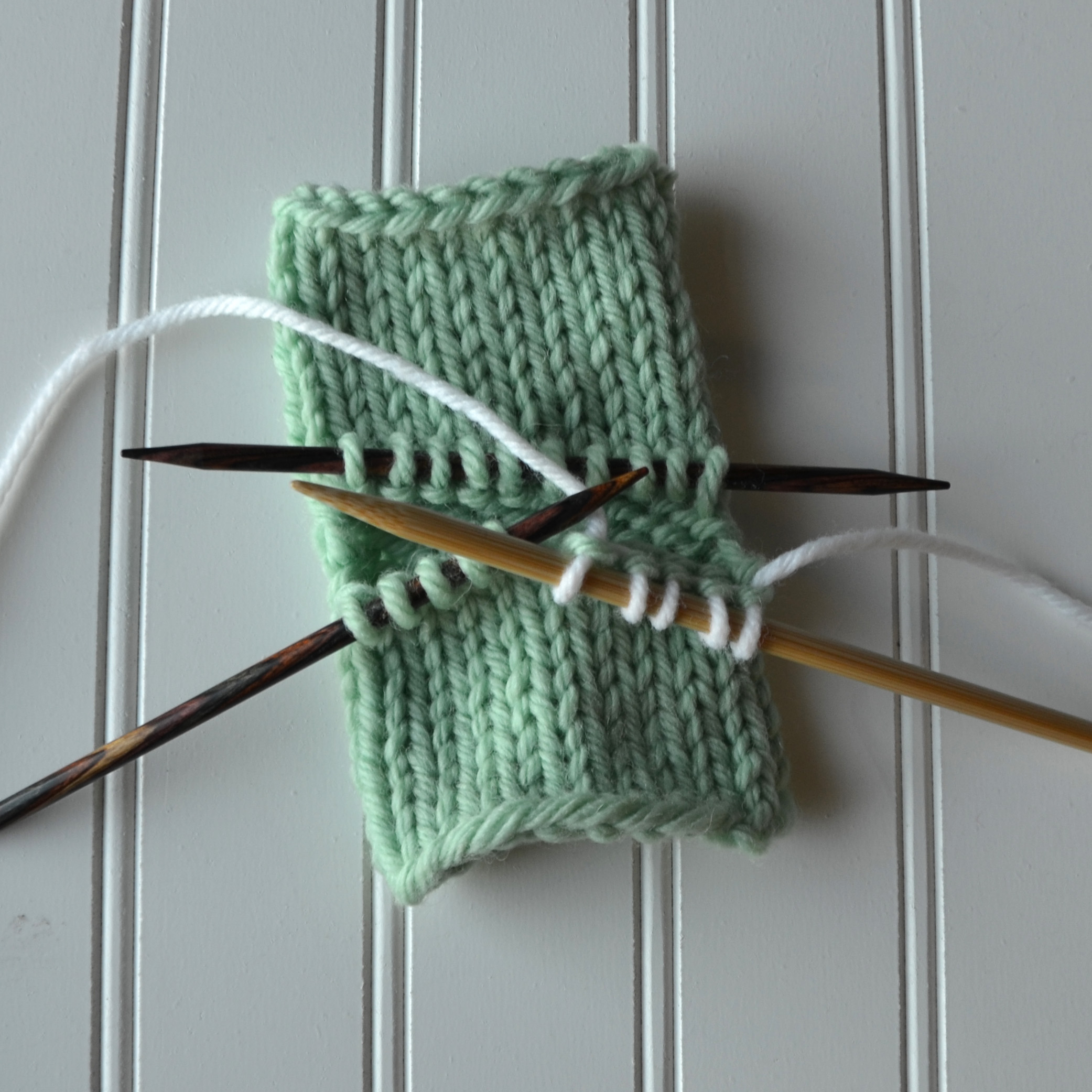
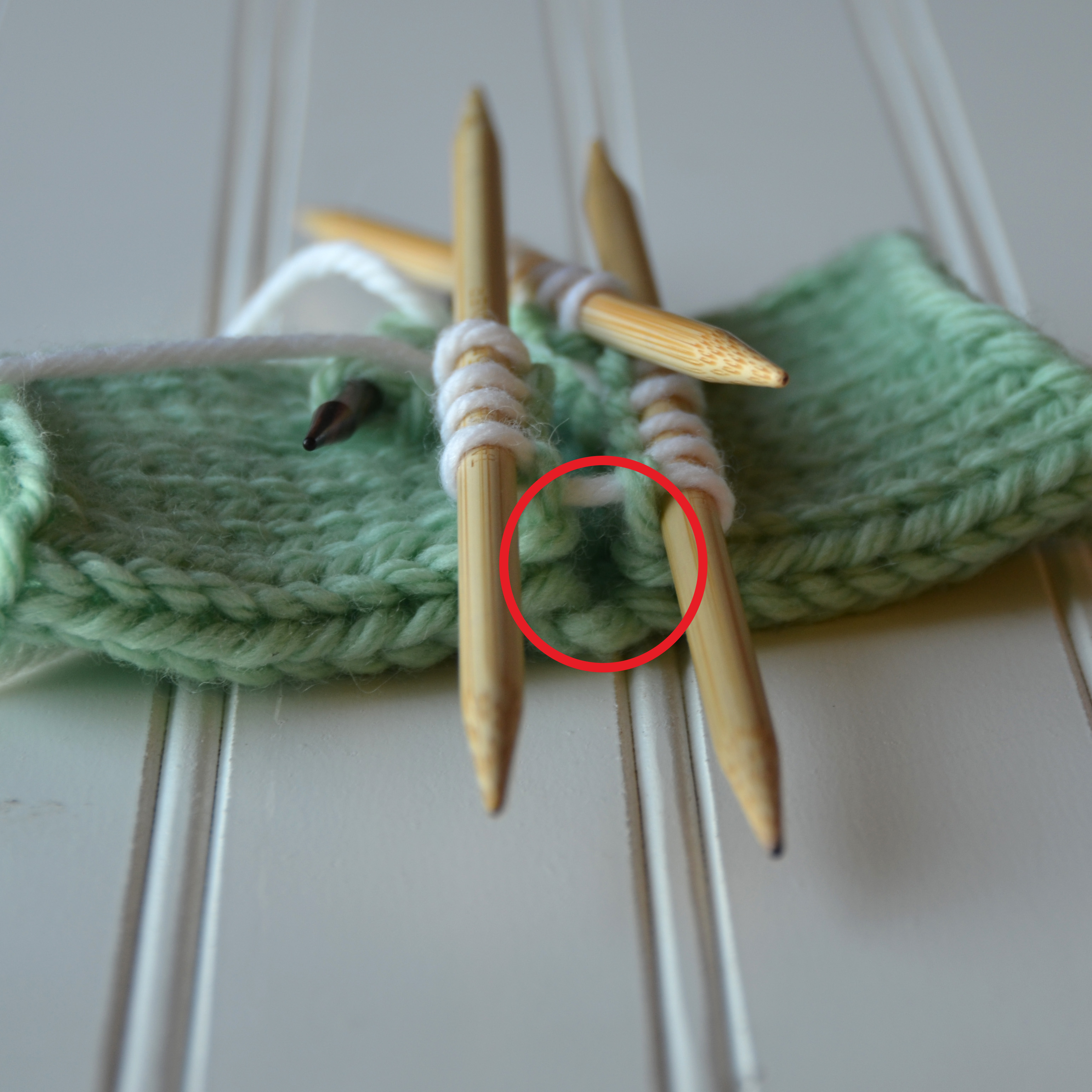
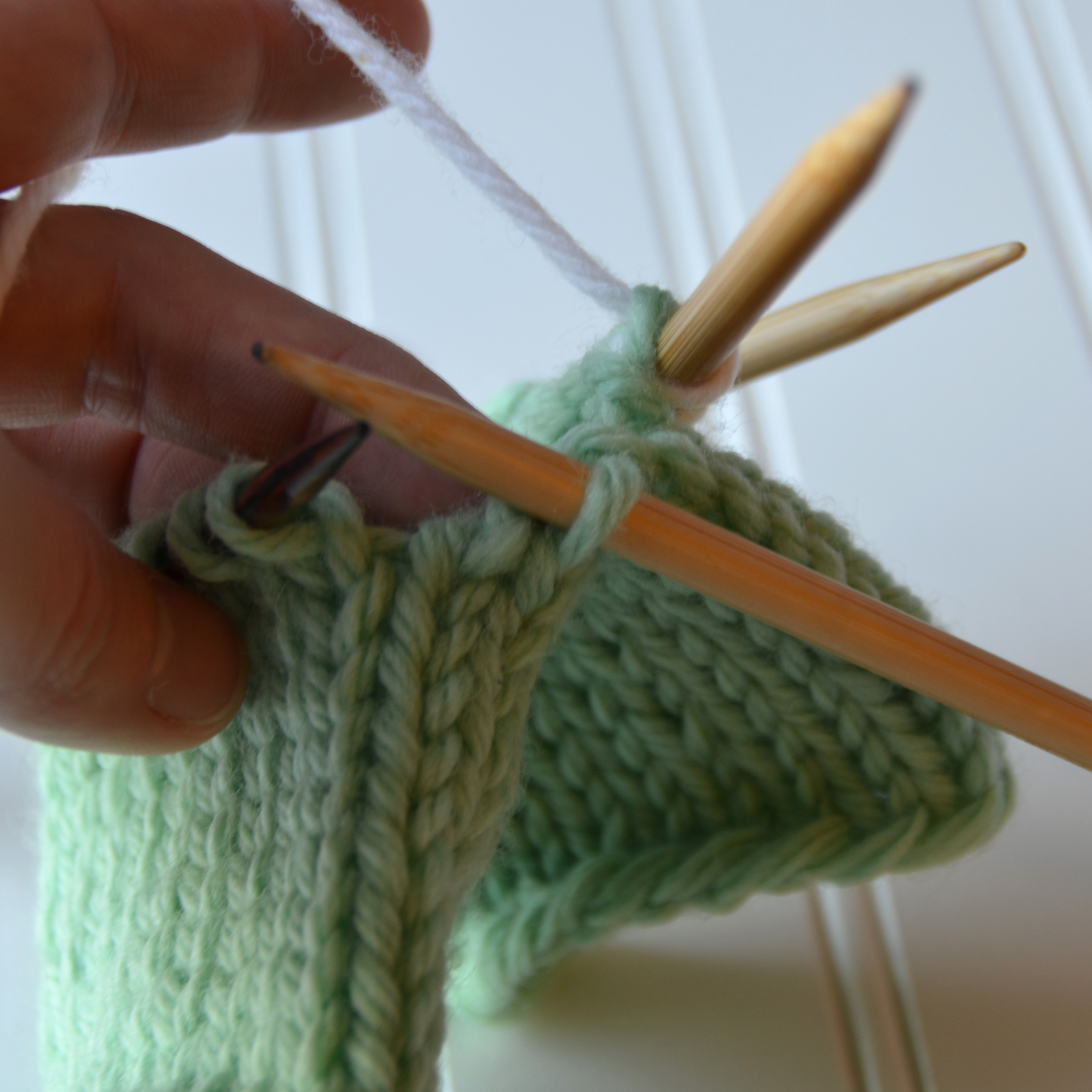
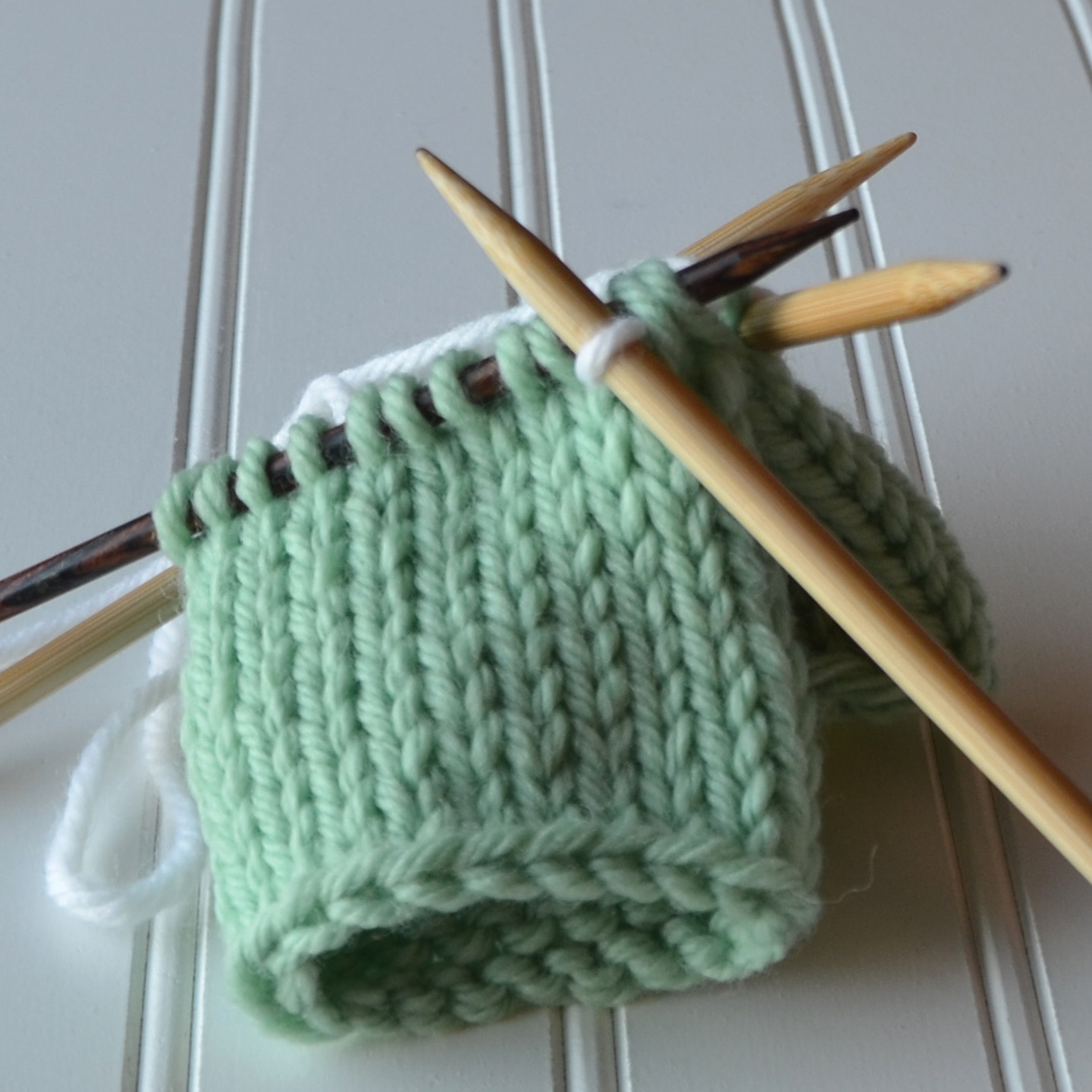
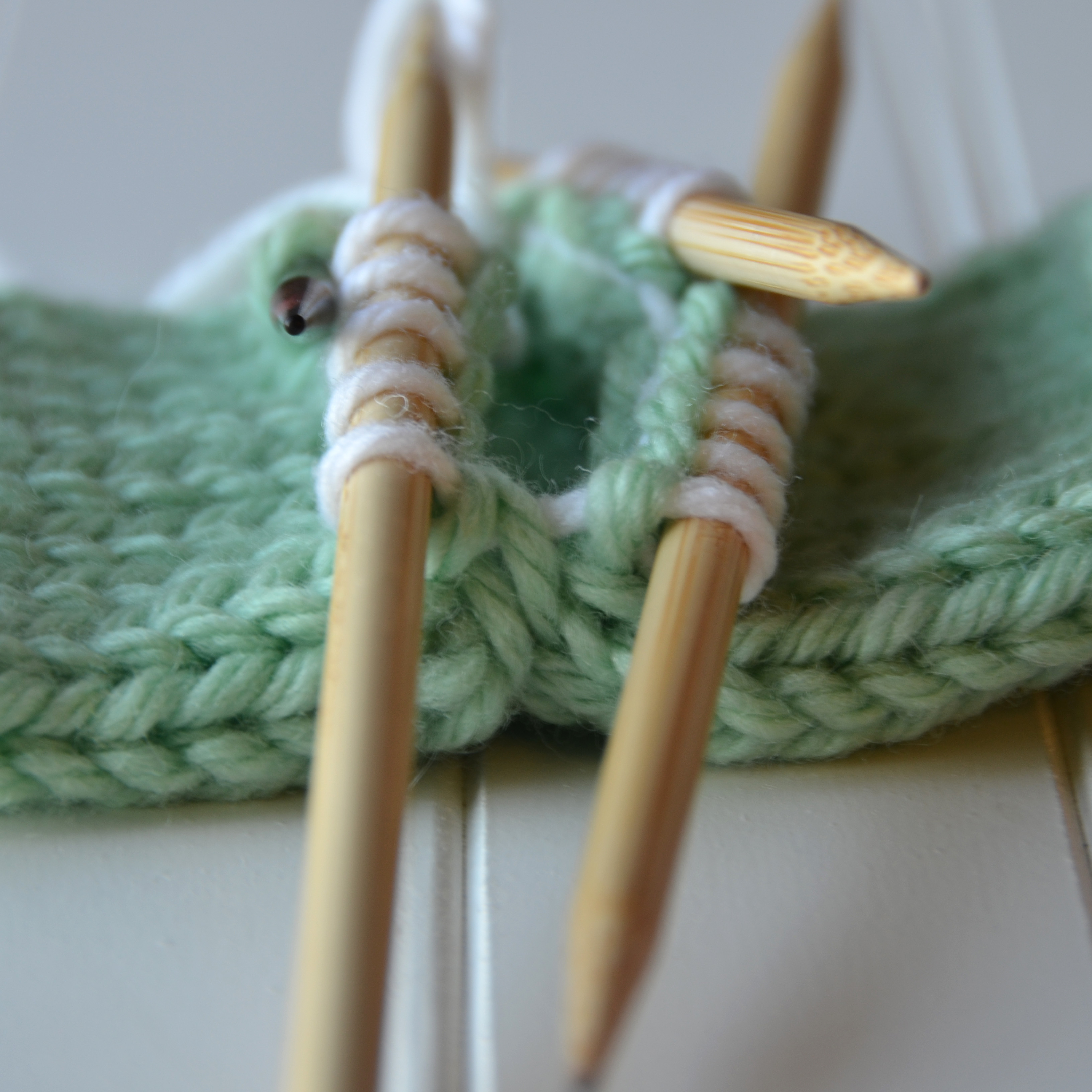
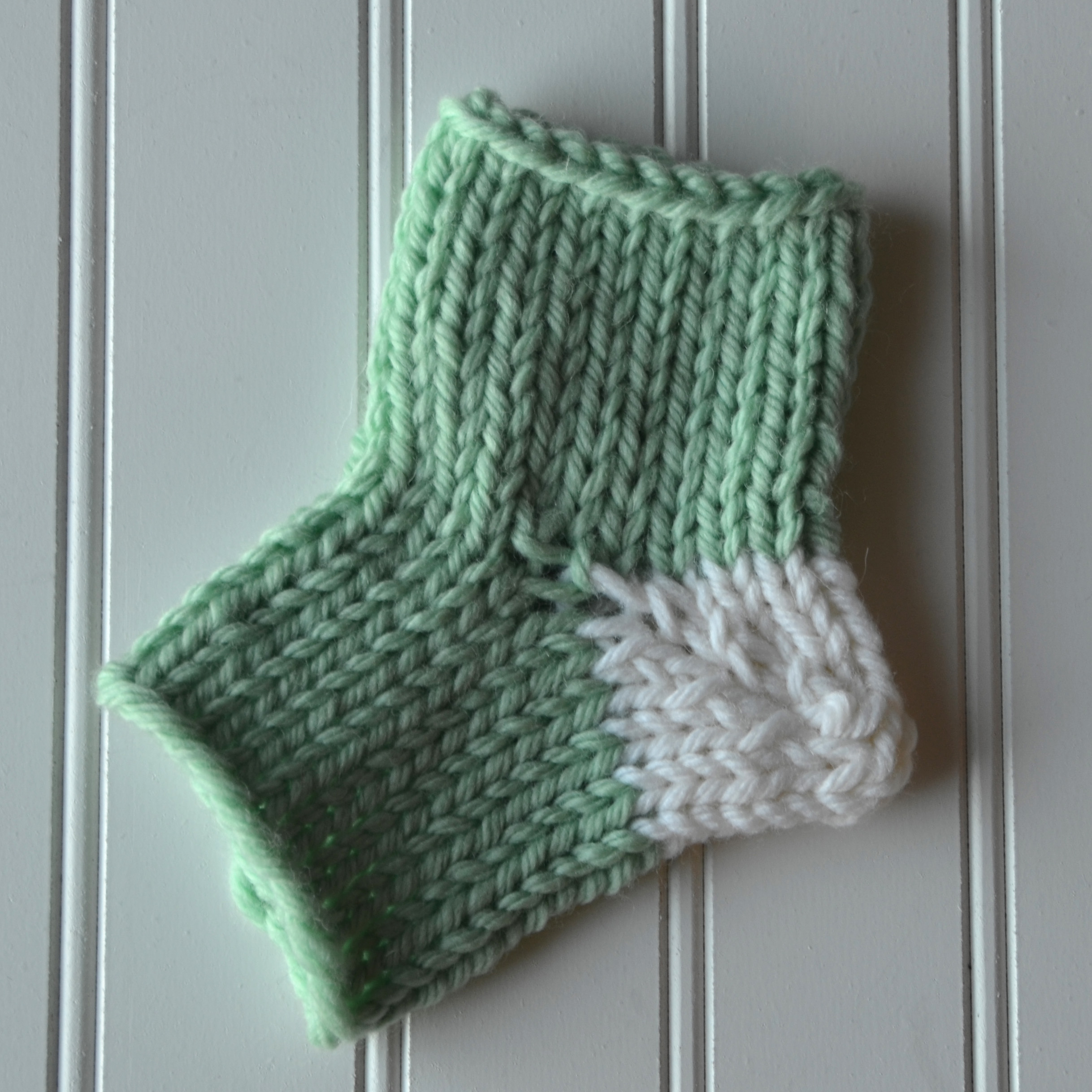
I also like this technique for set-in pockets on a top-down sweater. It’s not as hard as you thought it was going to be, right?
Today we’re introducing the Nutmeg Hat and Mitten Set. The neutral set is incredibly wearable for men and women alike. Personally, I love working with undyed wool. It is rustic in appearance and goes with nearly anything. While I’m a lover of color, I equally adore the natural shades of wool. You can see more of our Deluxe Worsted Naturals collection here.
This set features all over cables and a contrasting cuff. I wanted to give this set a professional finish, so I used the long-tail tubular cast-on method.
I can easily recall a time when I felt intimidated by the Tubular cast-on method. Like many things in knitting (and in life), we often perceive new things to be more challenging than they really are. This cast-on method is one of those things. If you look at the Nutmeg set, you’ll notice that the 1×1 Ribbing seems to run seamlessly from the right side to the wrong side. Notice the lack of a cast-on edge in the photo below. You can’t tell where it was cast-on. That is the beauty of a tubular cast-on.
It takes more time than most other methods and it feels a bit fiddly at first, but it’s well worth it. It’s by far my favorite method when I’m using 1×1 Rib.
If you’d like a closer look at each photo, simply click it.
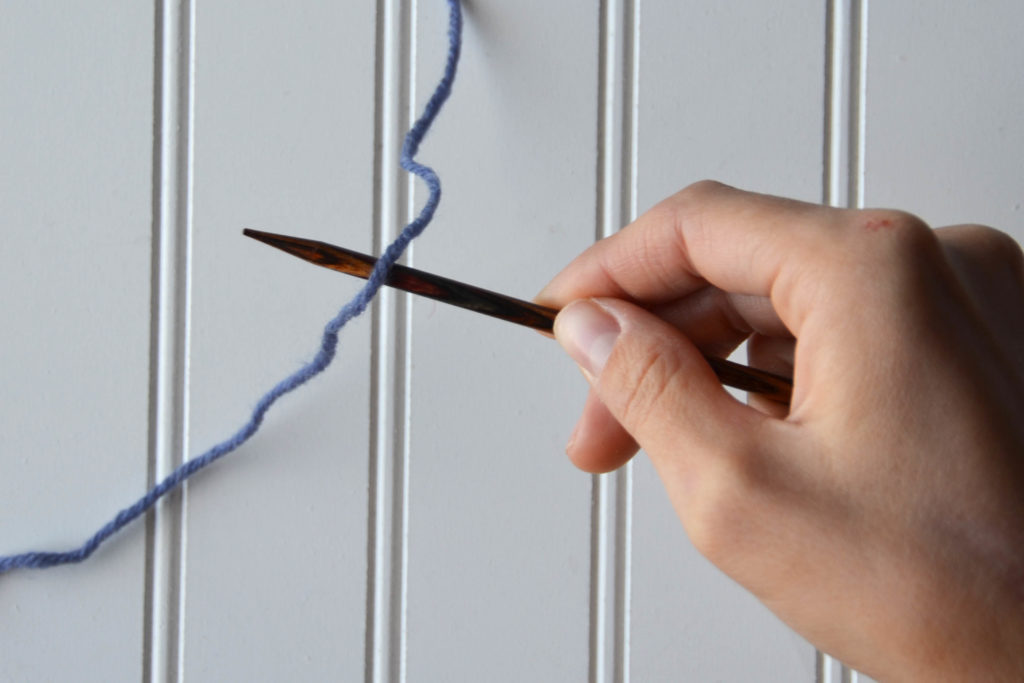
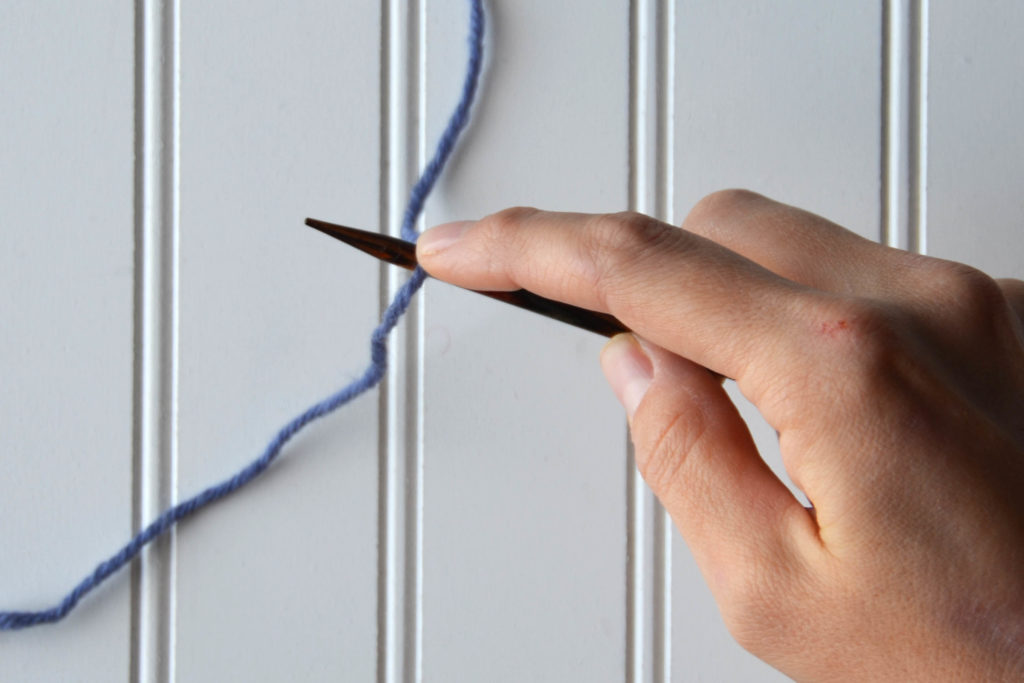
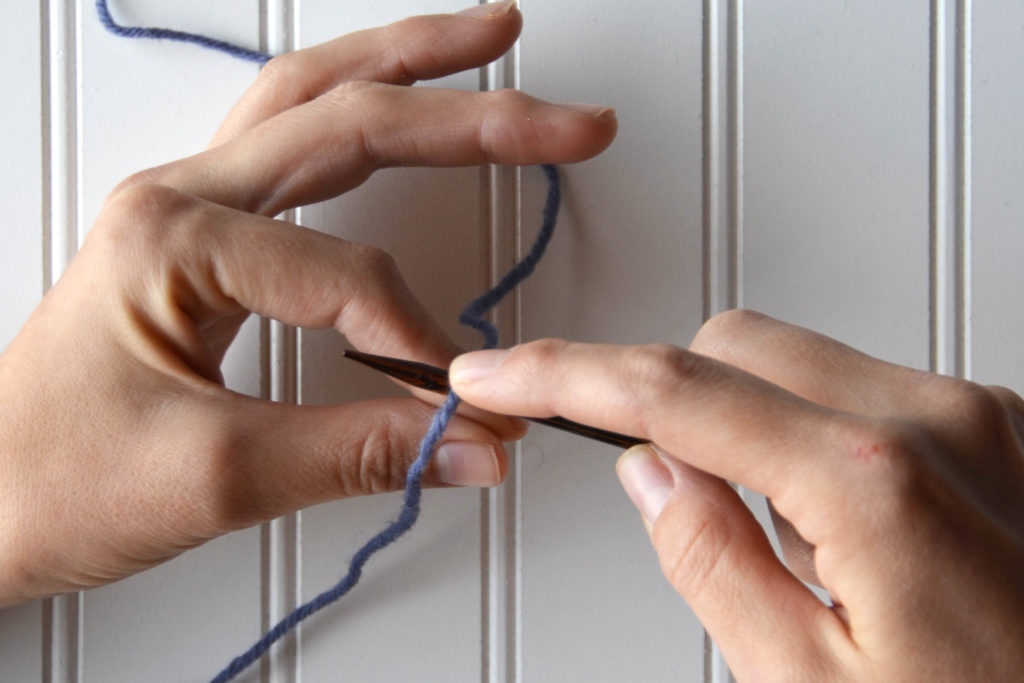
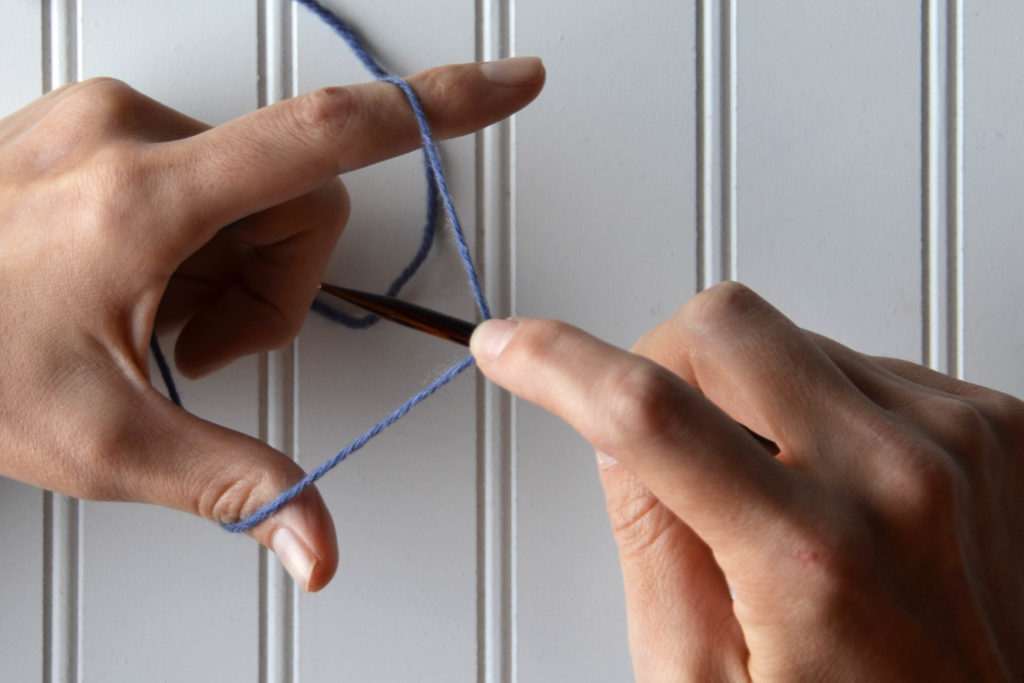
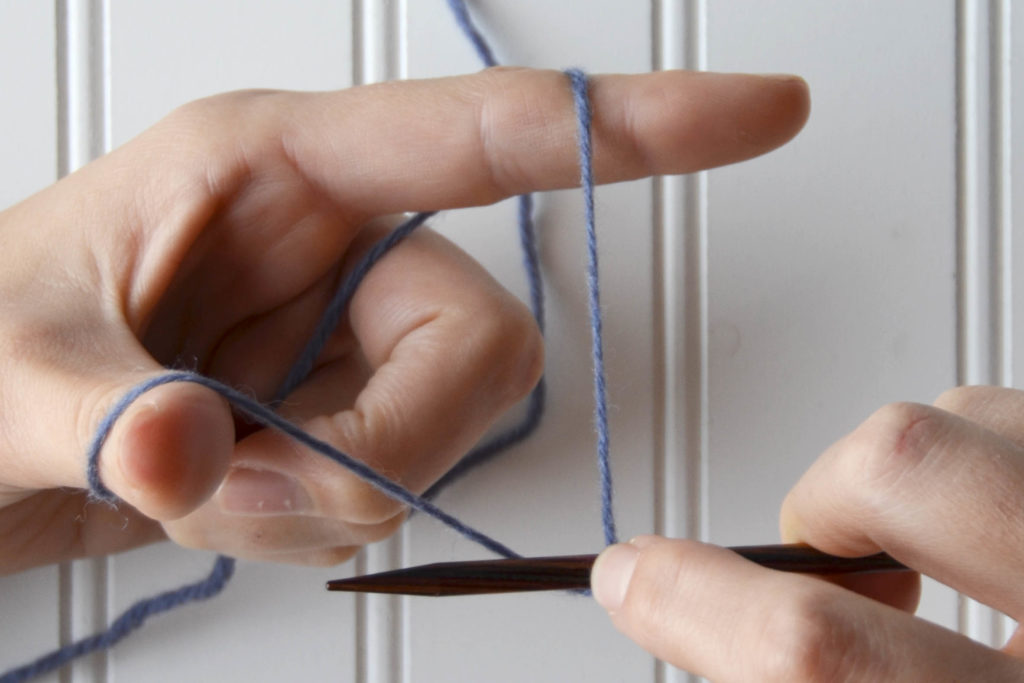
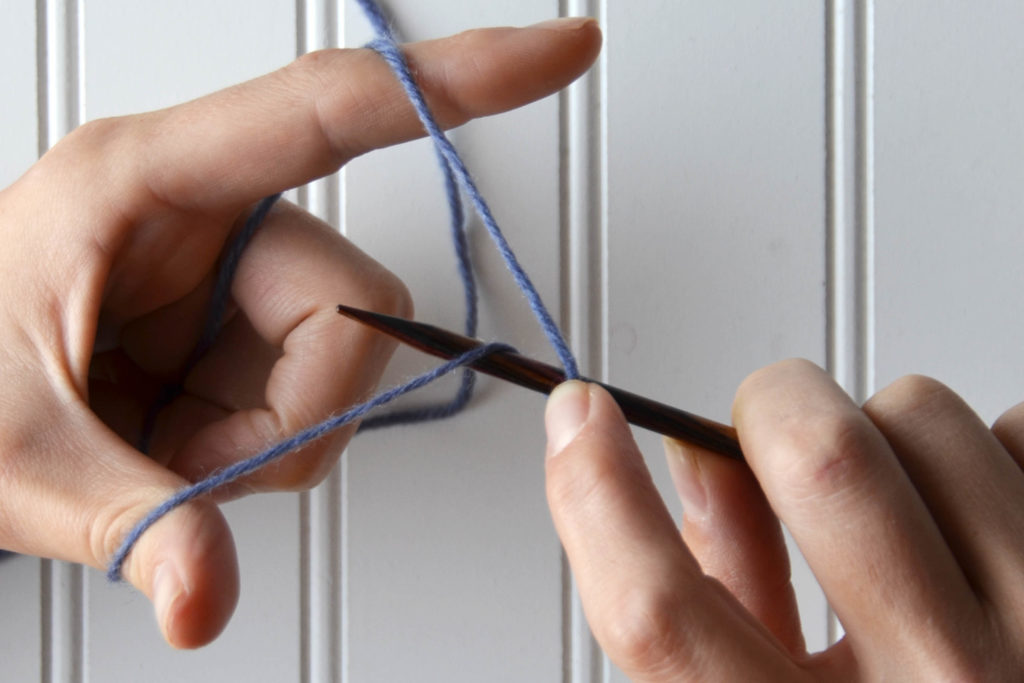
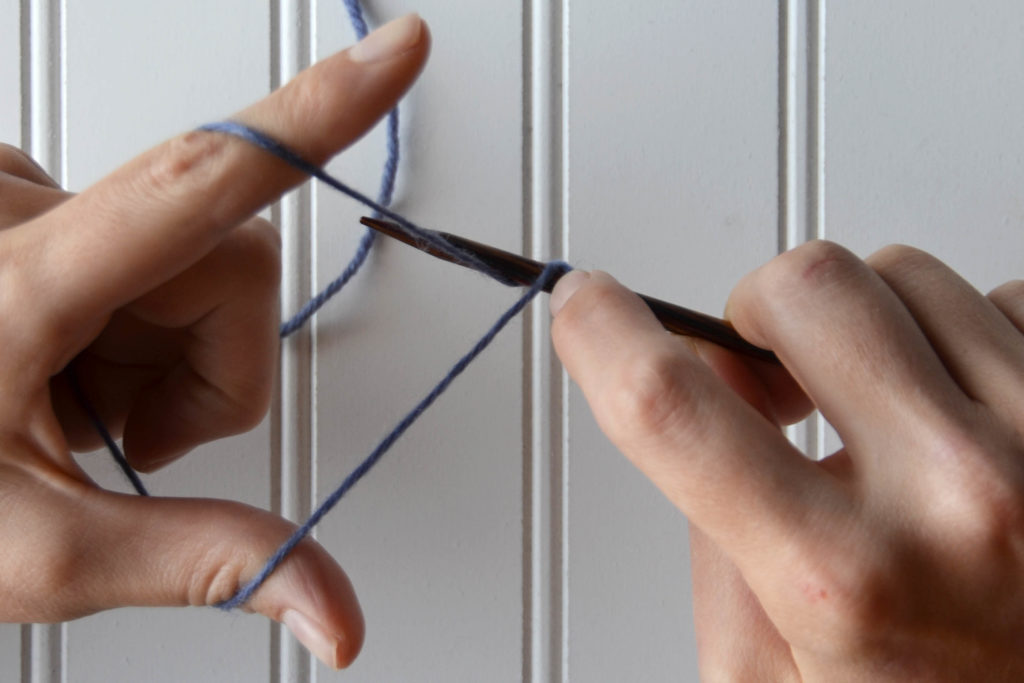
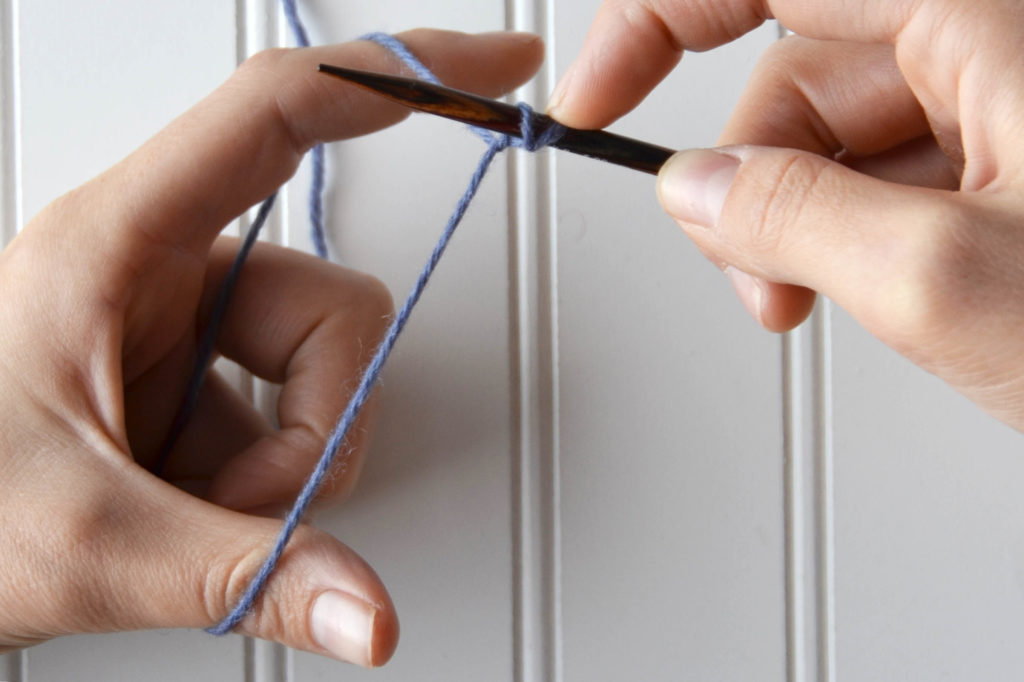
The motion for a purl stitch mirrors the knit stitch.
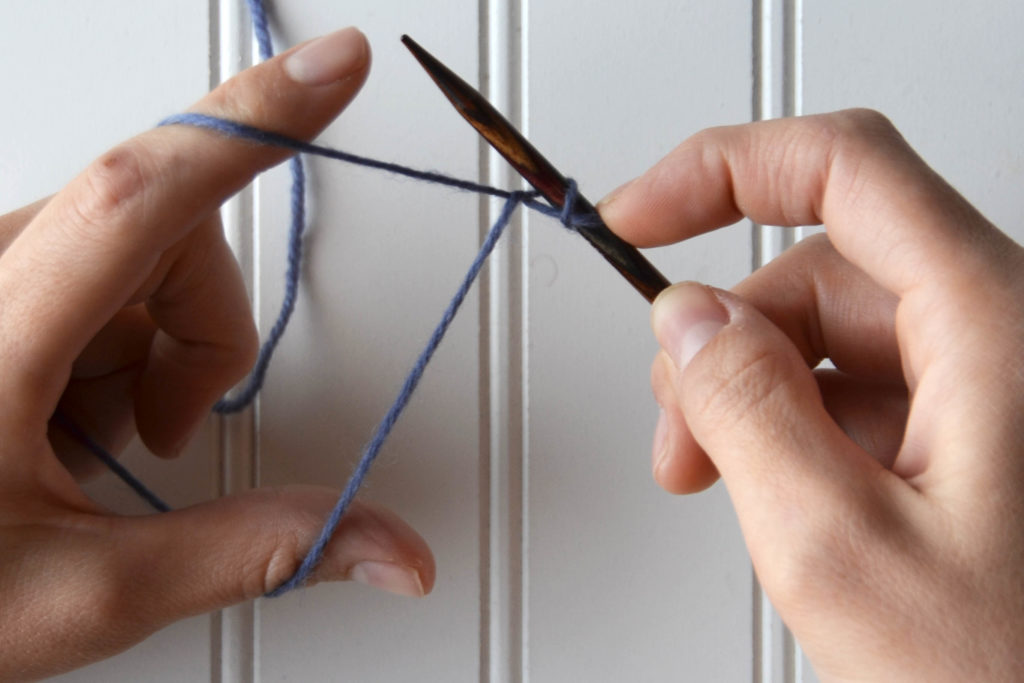
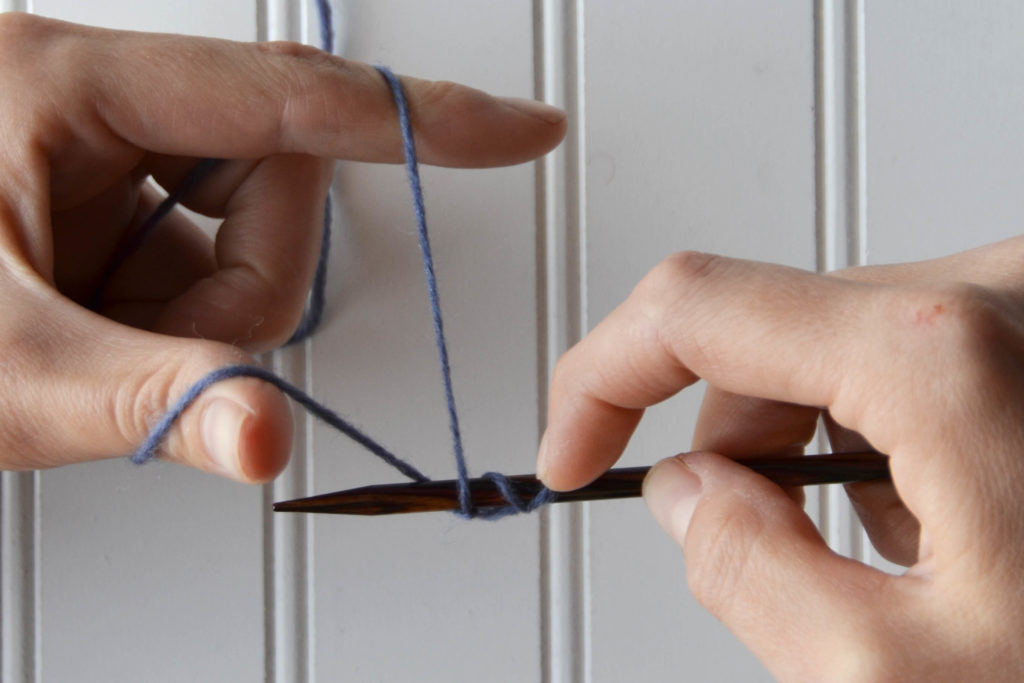
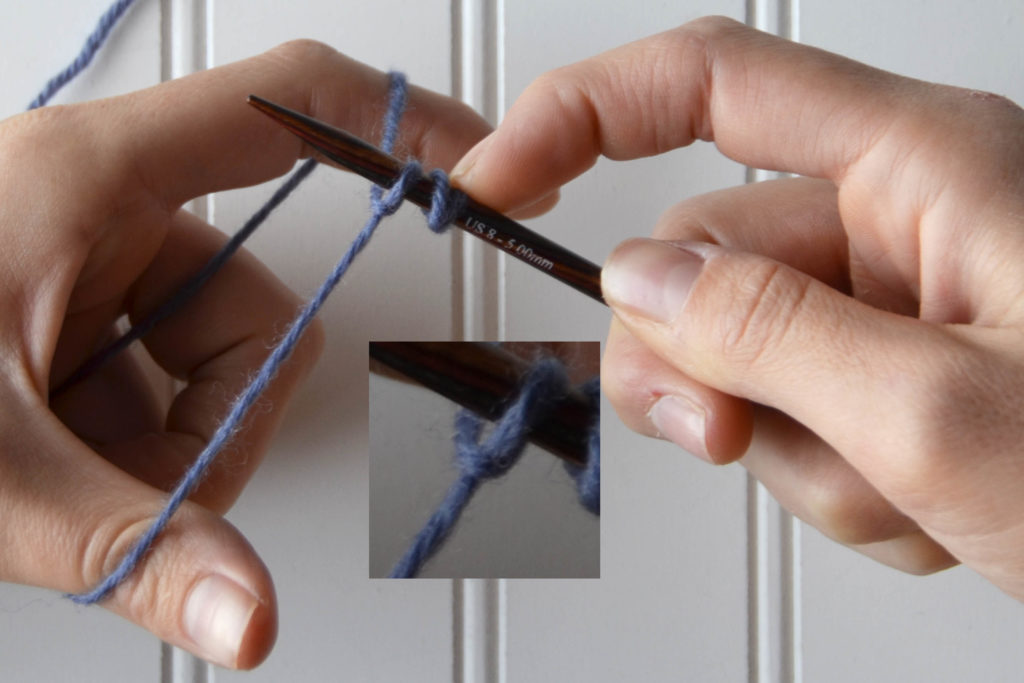
Continue in this manner, alternating between knit and purl stitches until you have the required number of stitches.
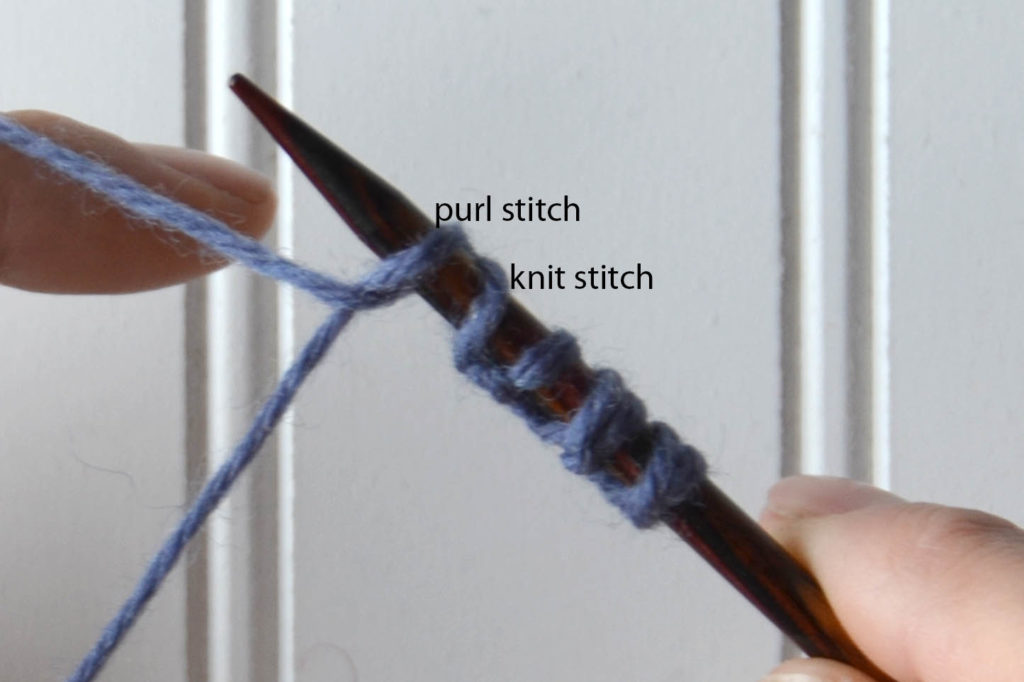
Once you have the correct number of stitches, carefully turn your work. I highly recommend using your index finger to hold the last stitch you cast on in place. Now you’ll begin working the first foundation row.
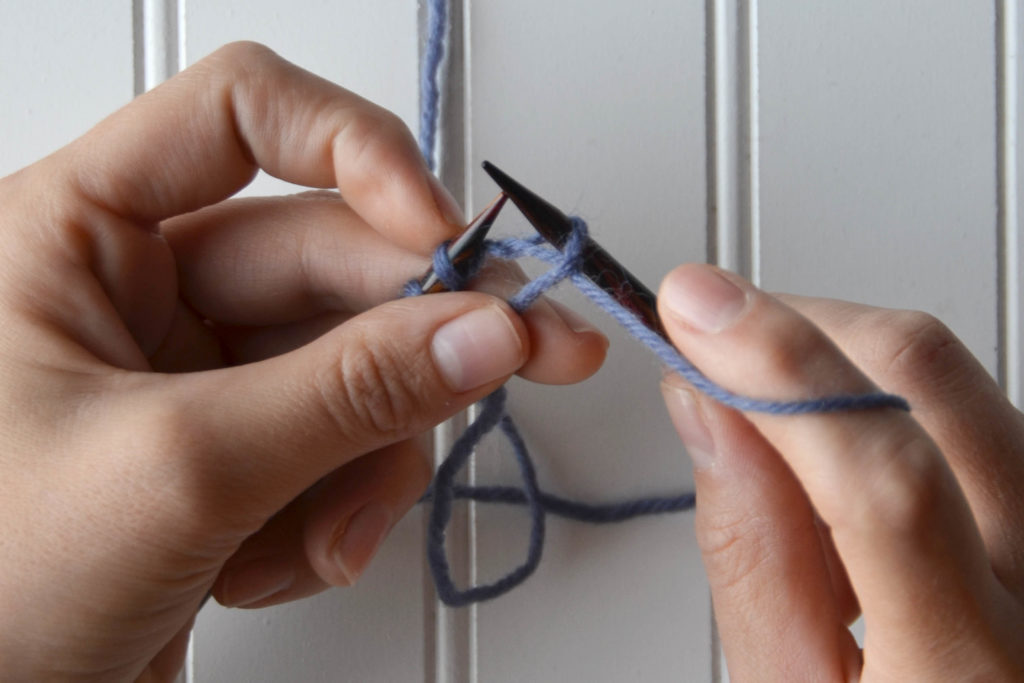
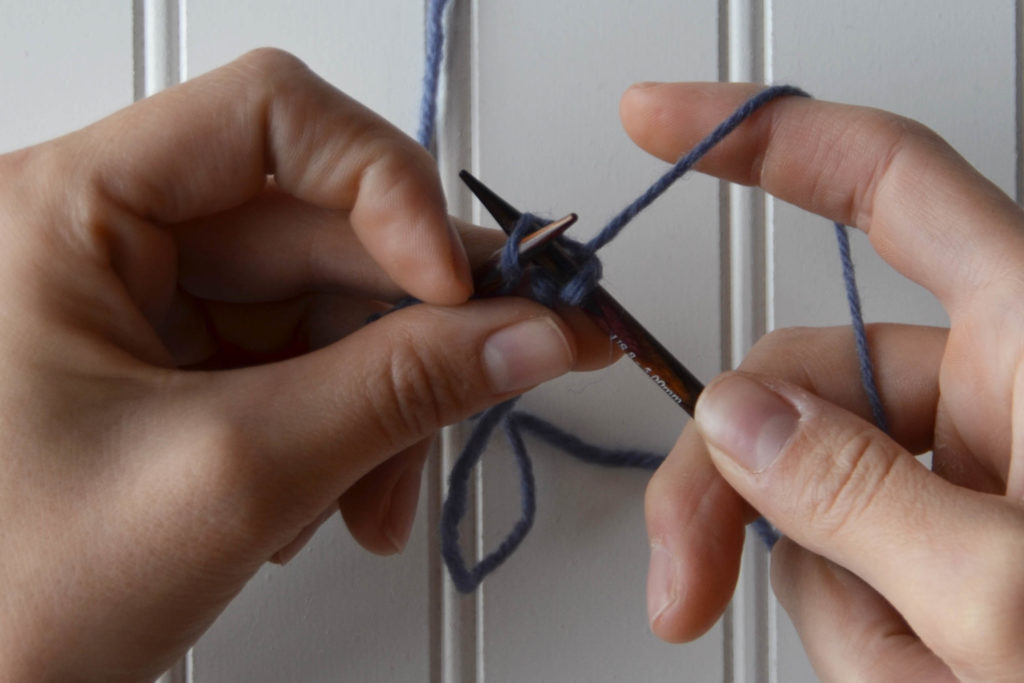
Continue to slip the purl stitches with your yarn in front and knit the knit stitches through the back loop to the end of your work. Turn your work. Now you’ll begin the second foundation row.
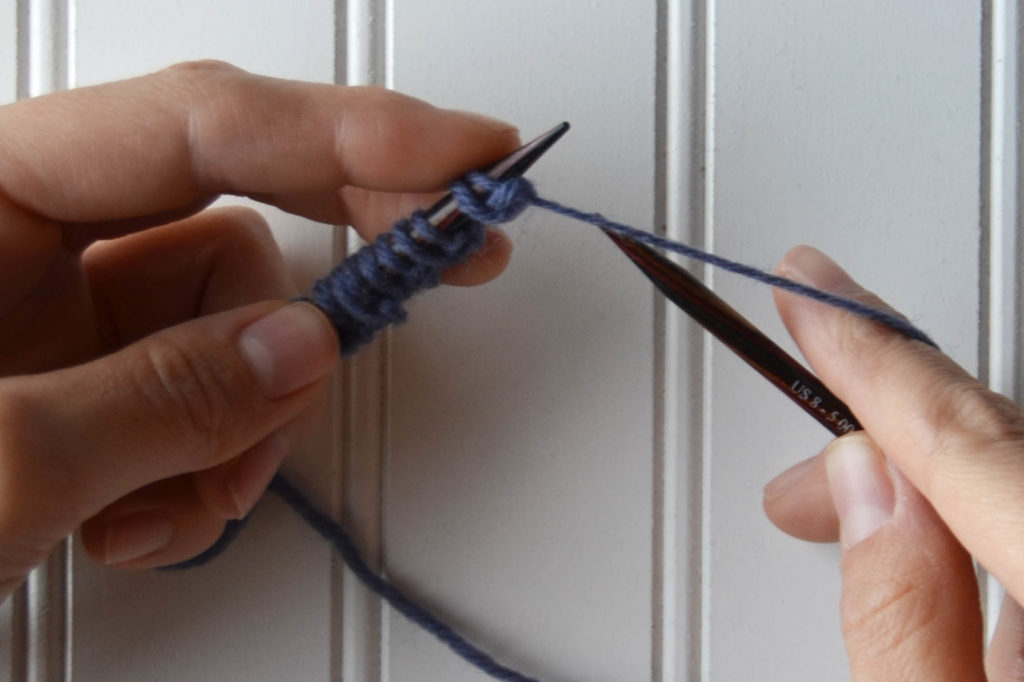
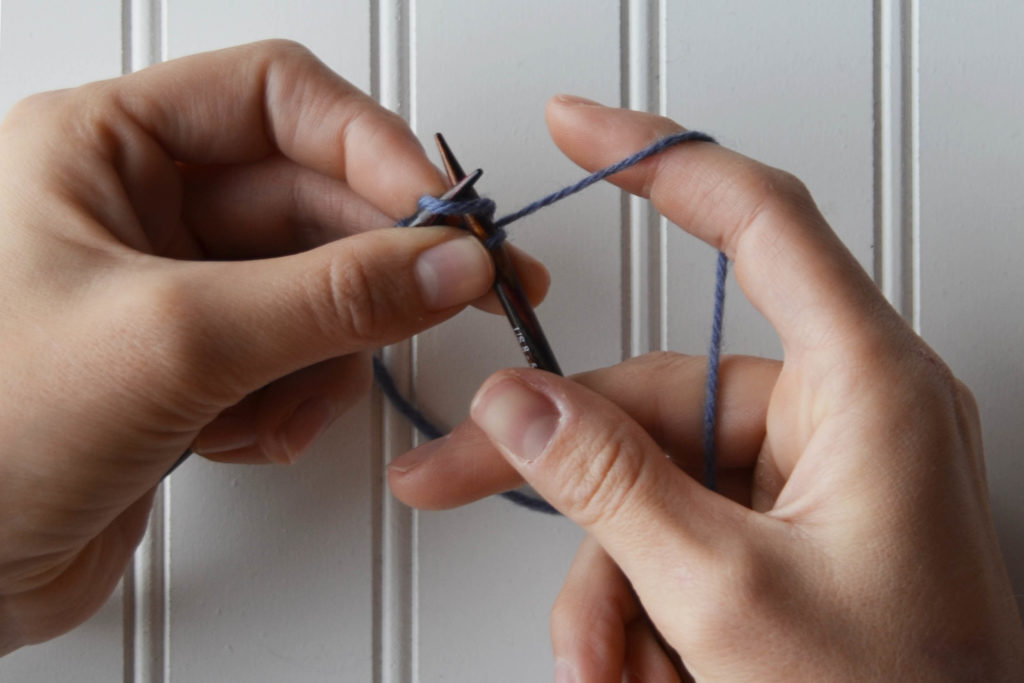
Repeat the last two steps to the end of the row
On the next row, simply work in K1, P1 ribbing by purling the purl stitches and knitting the knit stitches.
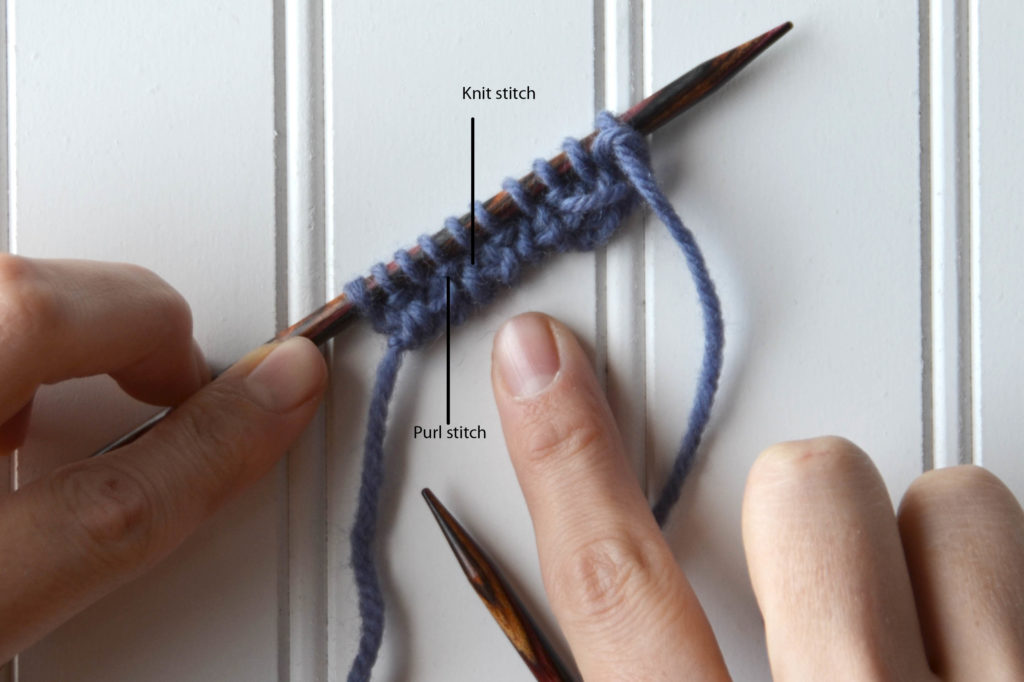
Once you’ve finished casting on, you can join your work in the round (as would be the case for the Nutmeg Hat and Mitten Set). There will be a small space you’ll want to seam. Typically I do this just before weaving my tail into the project.
This method works for projects that are knit flat or in the round. It gives your projects such a neat finish. It’s also much more stretchy than a traditional long tail cast-on.
You can find the link to the Nutmeg Hat and Mitten set here.
The Summit Scarf from our Colorful Commute e-book features triple knotted fringe. It is an easy way to add a lot of visual interest to your project. It may look complicated, but it’s really quite simple and doesn’t take much more time or effort than plain fringe. Today I’ll show you how to do it!
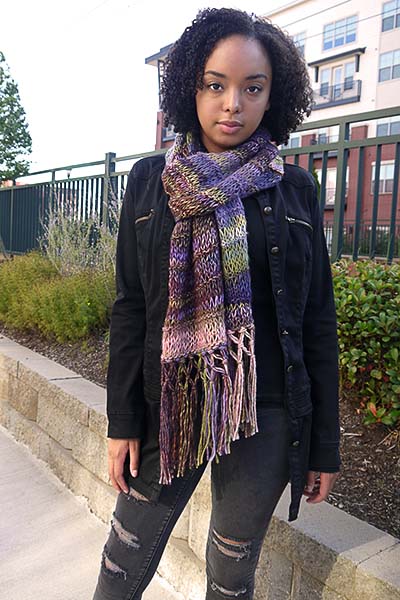
Step 1: Begin as you normally would when adding fringe to a project, for this scarf I cut 21” strands of yarn. Then, holding two strands together as one, I attached groups of fringe to the edge of the scarf, about one group every other stitch.
Step 2: Take half of one group of fringe knot together with half of next group of fringe 1” below first row of knots. I did not split the first and last groups of fringe.
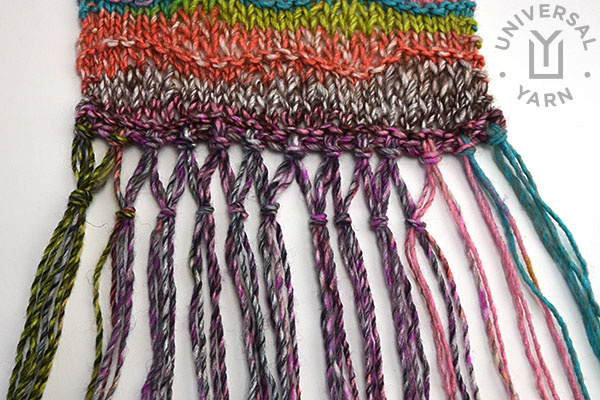
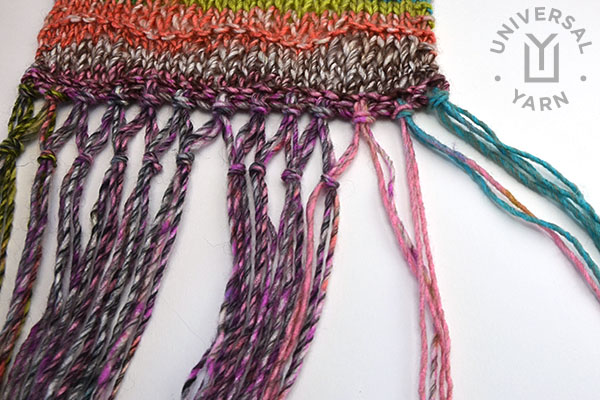
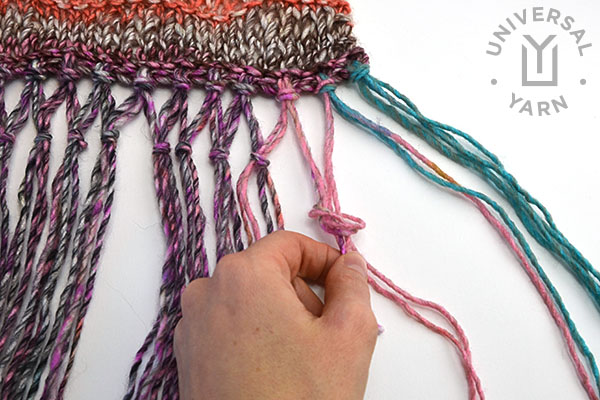
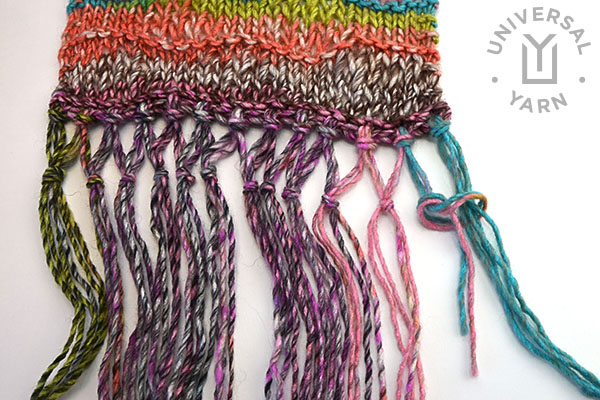
Step 3: Repeat for another row of knots. To finish, trim fringe evenly.
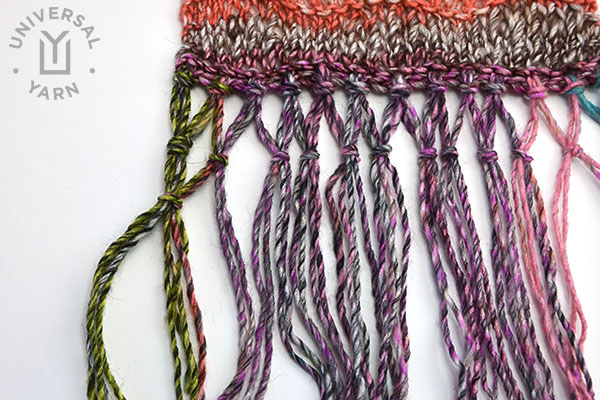
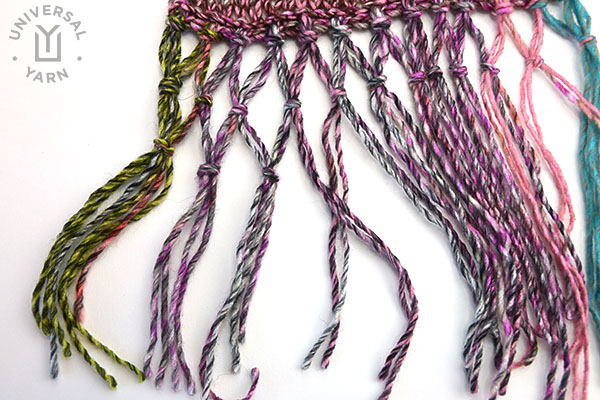
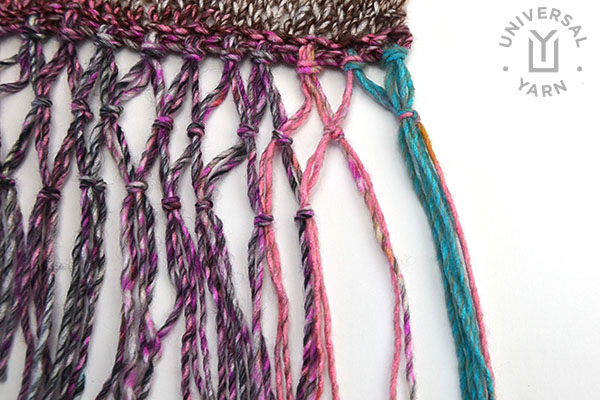
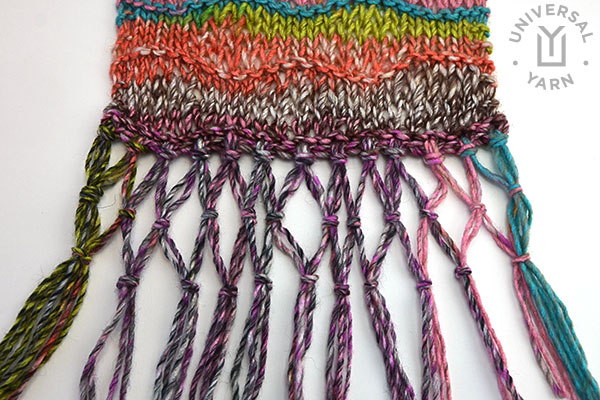
That’s all there is to it! You can keep adding more rows of knots to create some really amazing and intricate looking fringe, use longer strands of yarn when increasing the number of knotted rows. Beads can be placed above the knots (or even in place of the knots) to add some sparkle – there are so many possibilities.
Today, I have another tutorial involving a crochet hook to go along with our In Transit e-book. The Trade Street Cowls and Hat pattern uses contrasting applied crochet lines to create vertical stripes. The lines are added to the purl columns in the finished pieces.
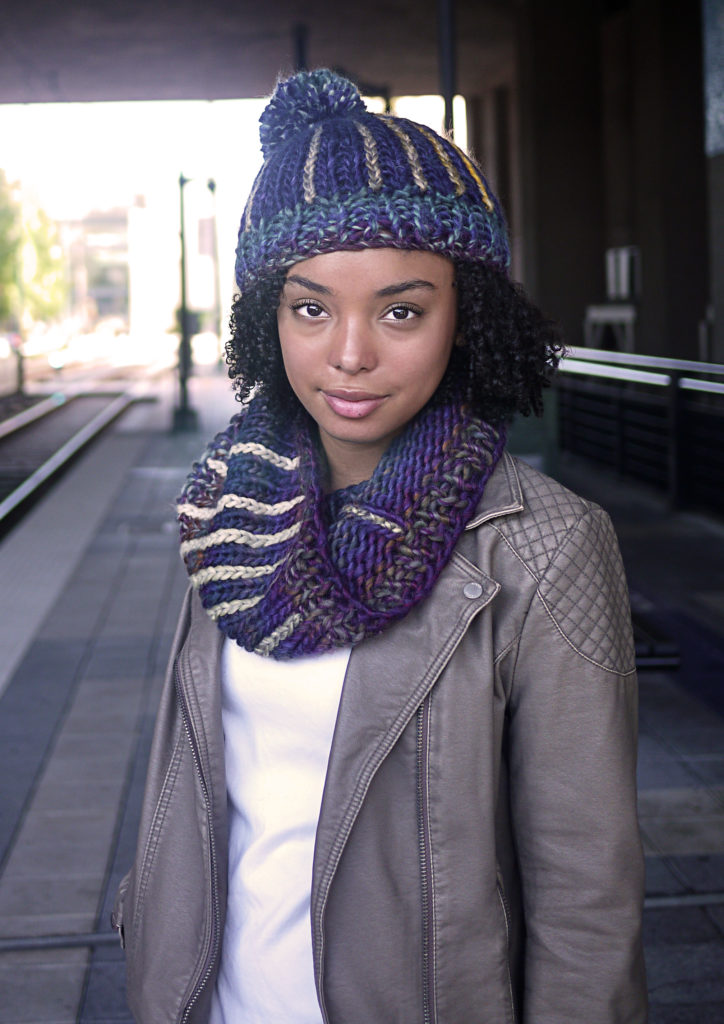
It can be a lot of fun choosing the color for the applied crochet lines, and there are a few options, depending on the look you would like to create. Using a solid color in Uptown Bulky that also appears in the Main Color produces a plaid-like effect. With Classic Shades Big Time as the Contrasting Color, there are a ton of options – choose a highly contrasting section of the color repeat to make the stripes pop, use a section that is neutral or similar to the Main Color for more subtle stripes or choose a section with quicker color changes for gradient stripes.
Let’s get started!
Once you have finished and blocked your cowl or hat, you are ready to add the applied crochet lines.
Step 1: Holding yarn beneath work, insert crochet hook through the center of the first purl st in a column.
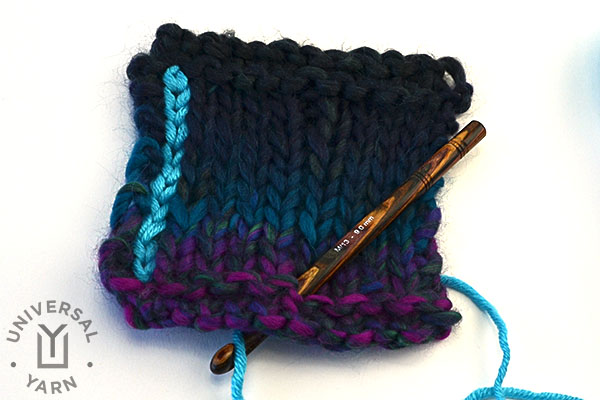
Step 2: Pull a loop of yarn through to the front of the work.
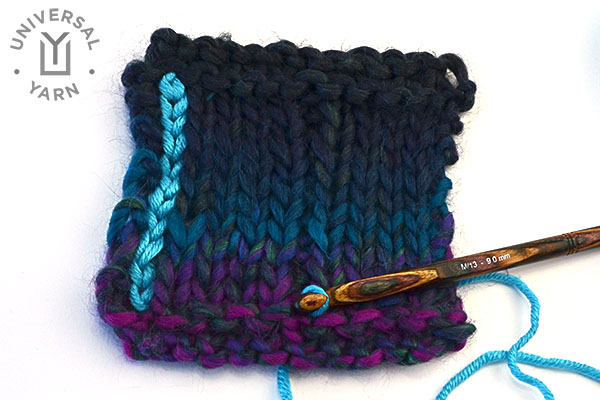
Step 3: Insert hook through the next st up in the same purl column, pull a loop of yarn through to the front of the work (2 loops on hook), pull the second loop through the first loop (1 loop on hook); repeat along entire column.
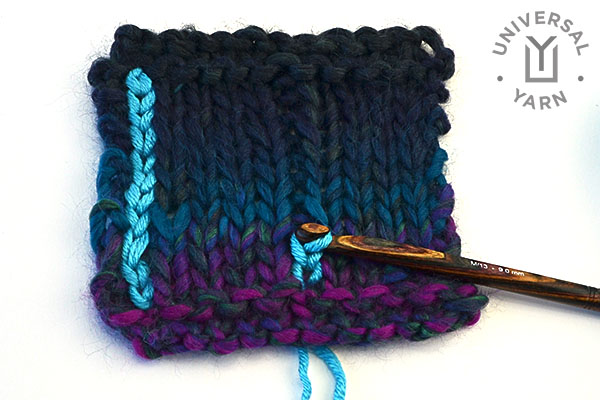
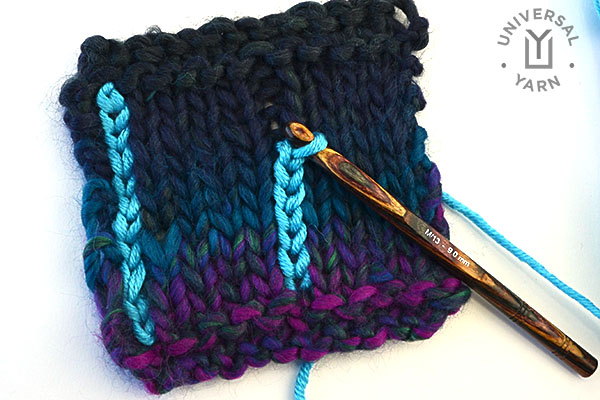
Step 4: When entire column is complete, break yarn, leaving a 3 to 4 inch tail and pull through last loop.
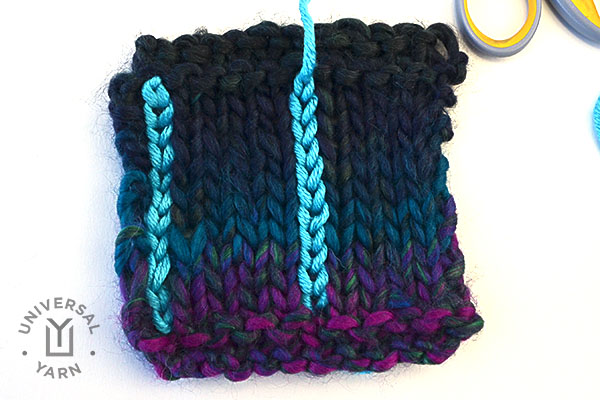
Step 5: Pull tail to wrong side and weave in ends.
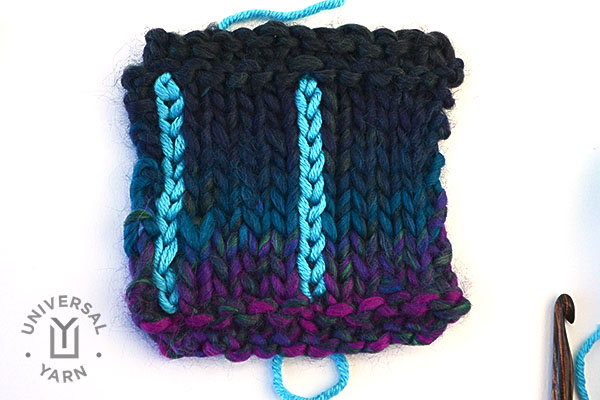
Keep going until all of the purl columns have applied crochet lines.
Will you go for subtle or bold stripes on your Trade Street Cowls and Hat?
Have you seen the New Bern Cowl and wondered how I created that faux cable look? Today, I’ll show you how, step by step!
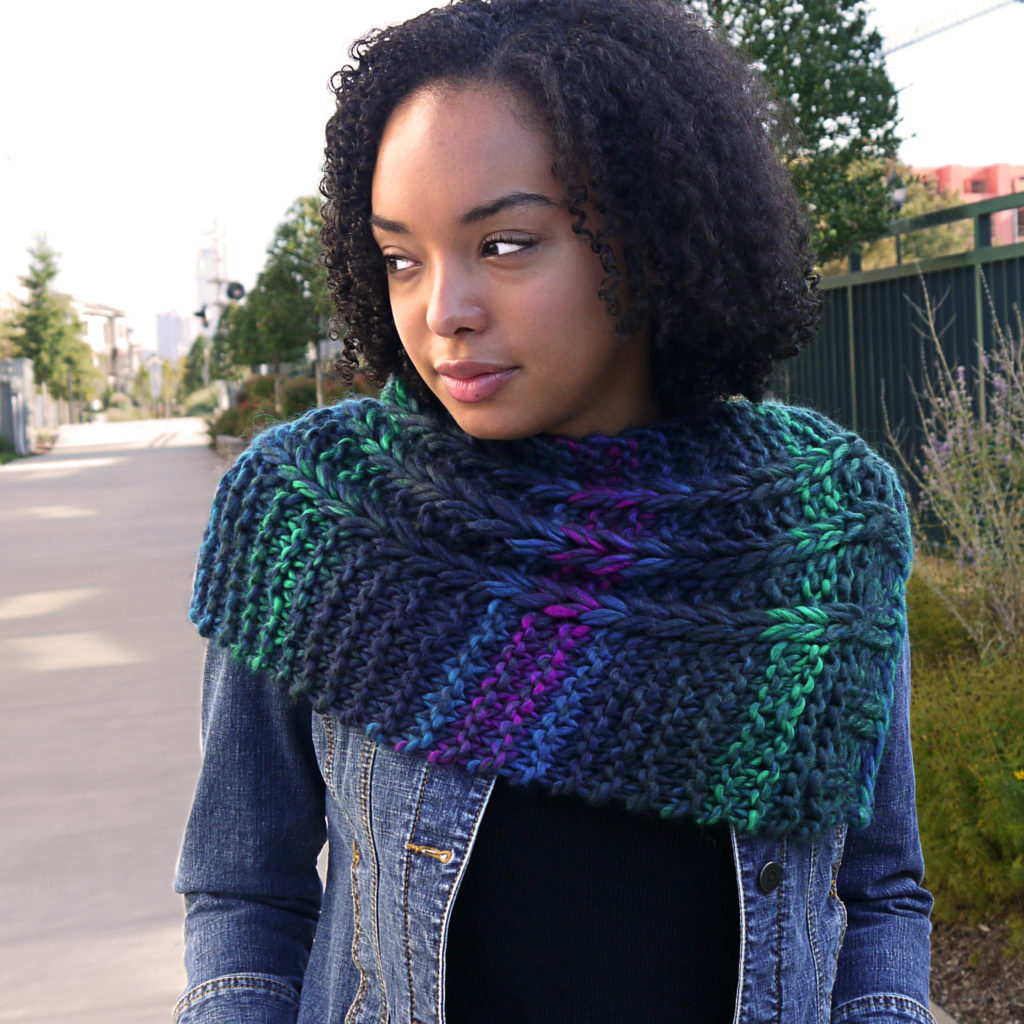
It is a very simple technique, but brace yourself knitters…it does involve a crochet hook! Don’t worry though, if you can do a simple chain, you can do this.
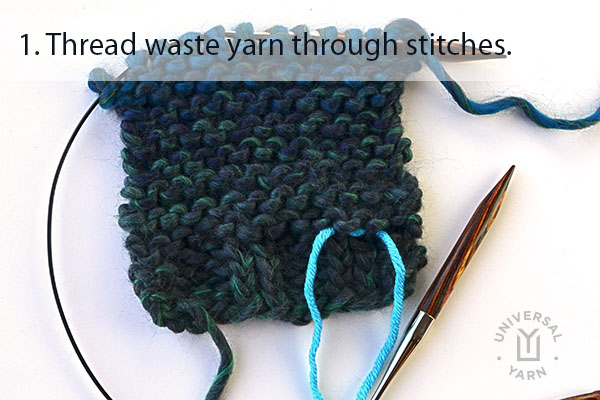
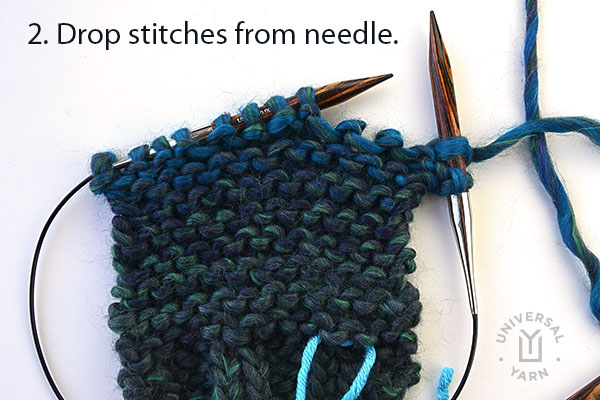
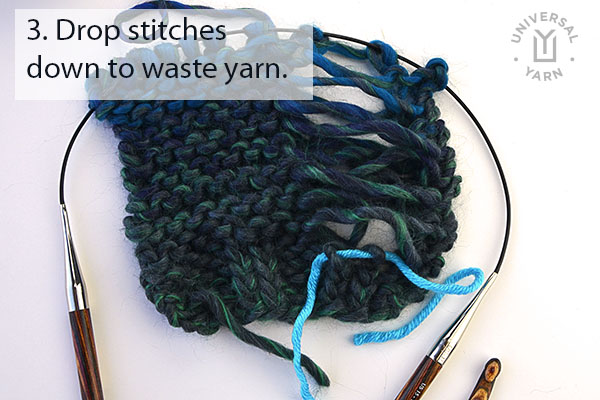
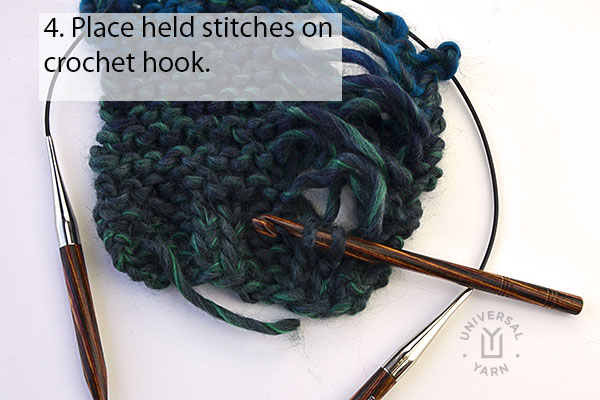
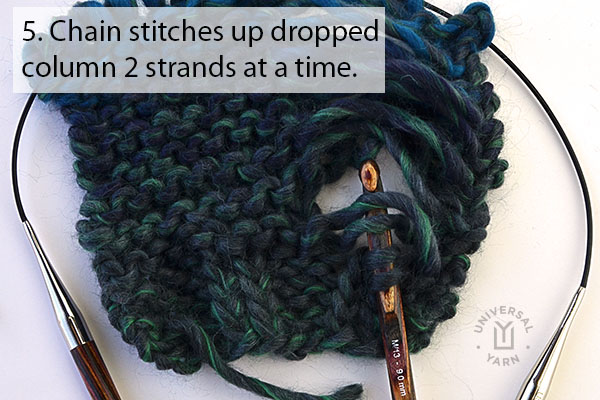
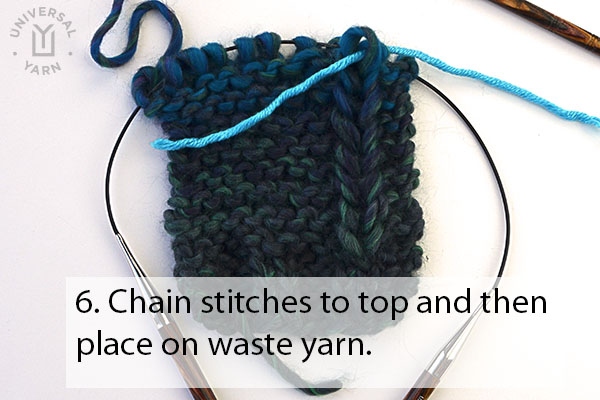
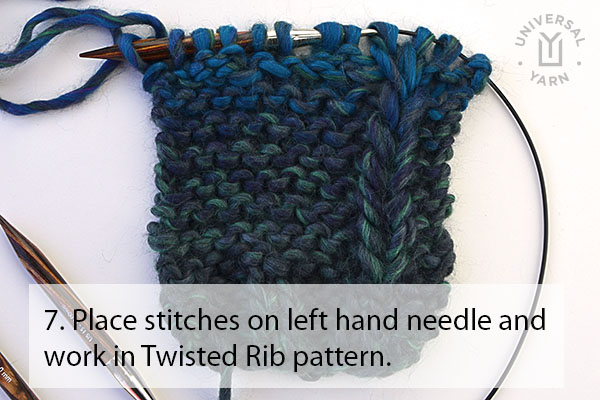
Pretty easy, right? I can’t wait for you to try it out on your very own New Bern Cowl!